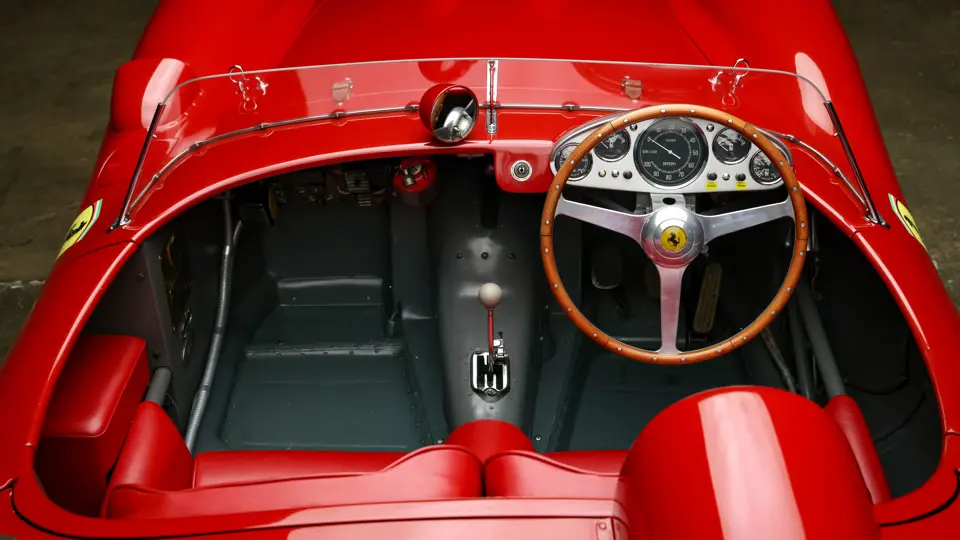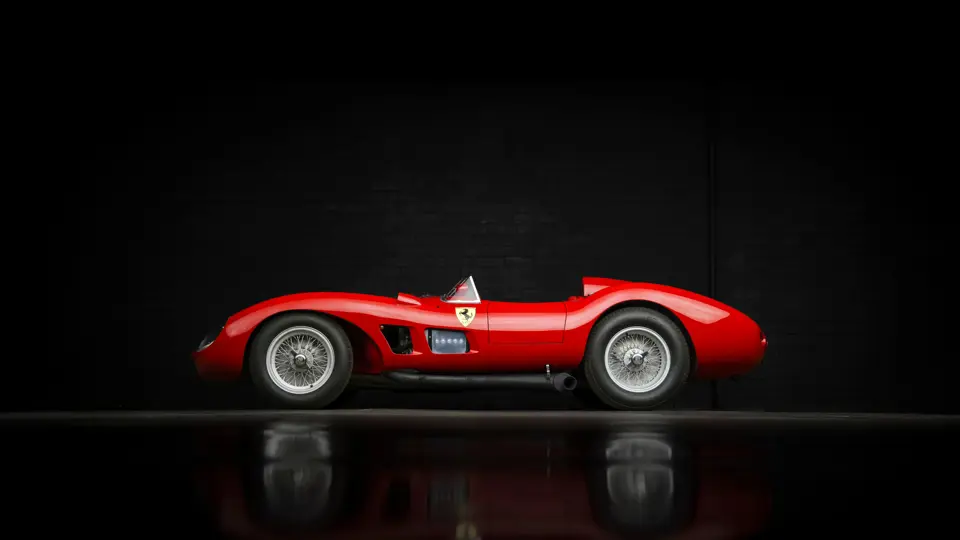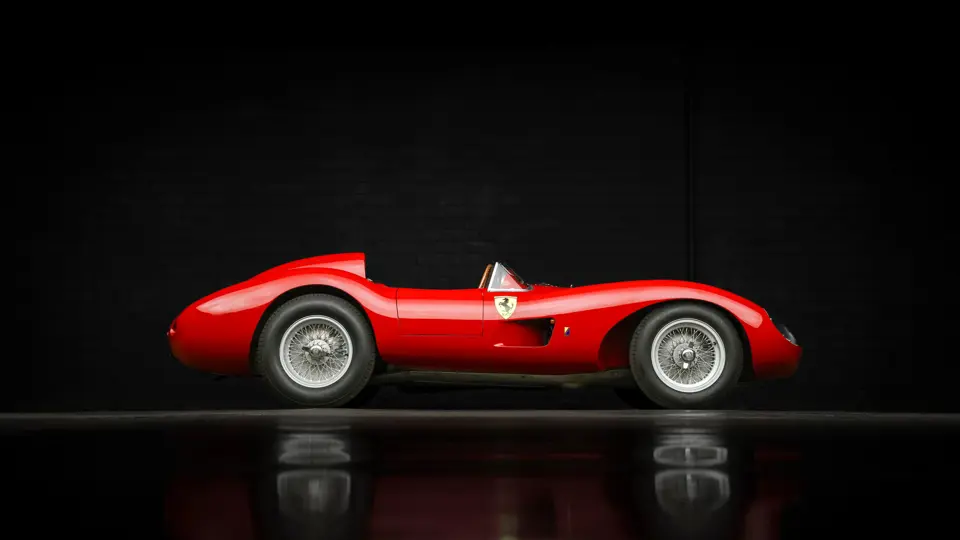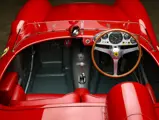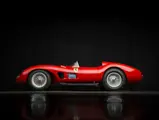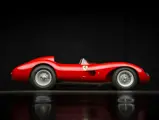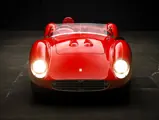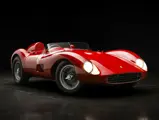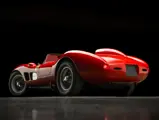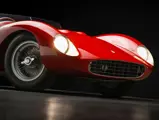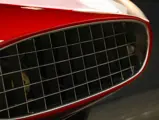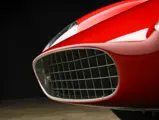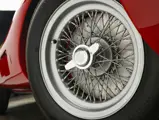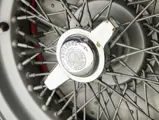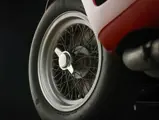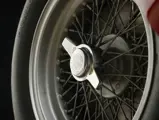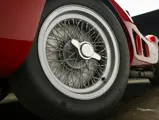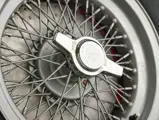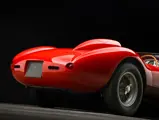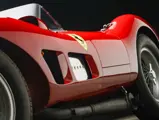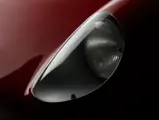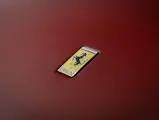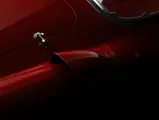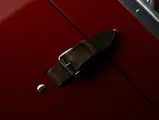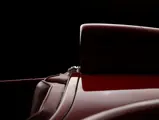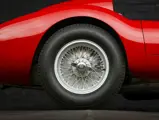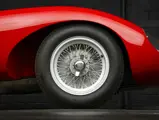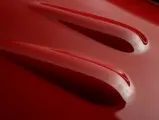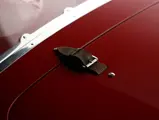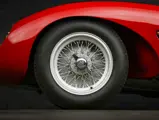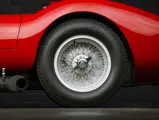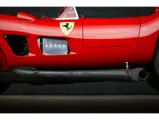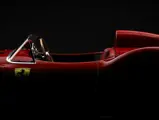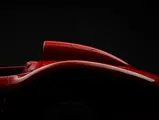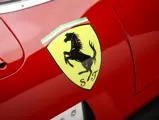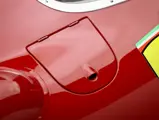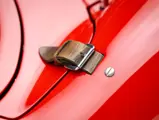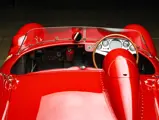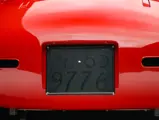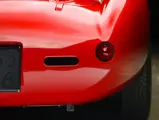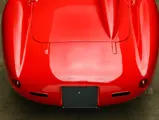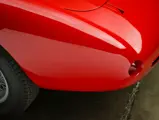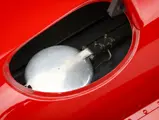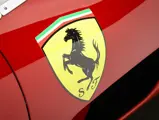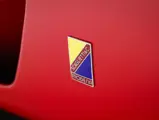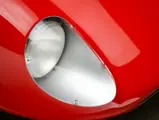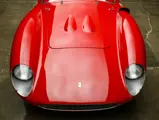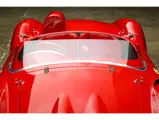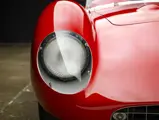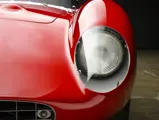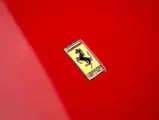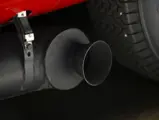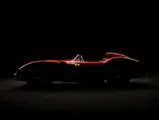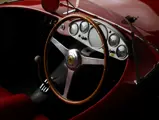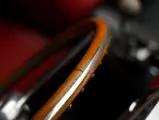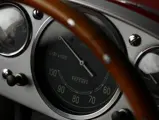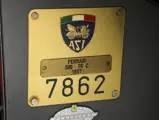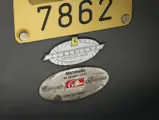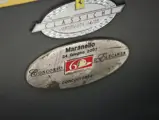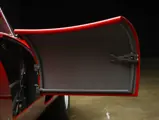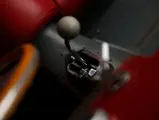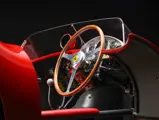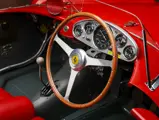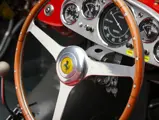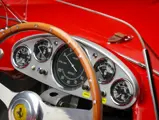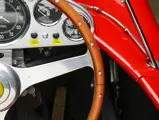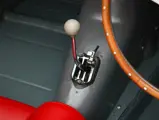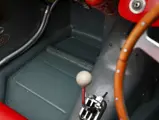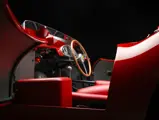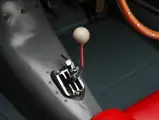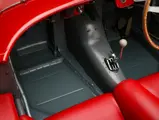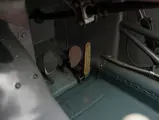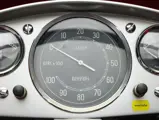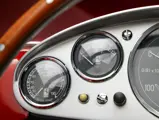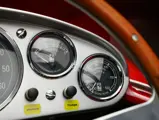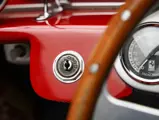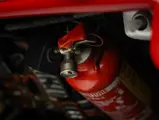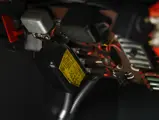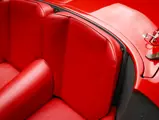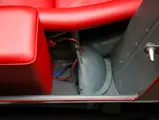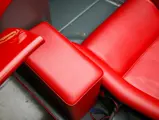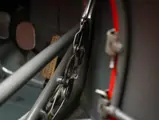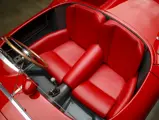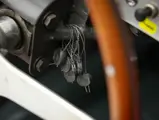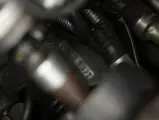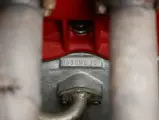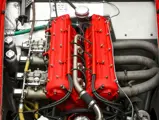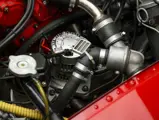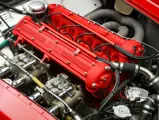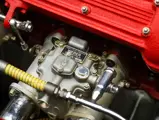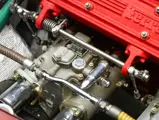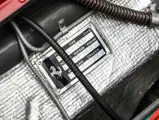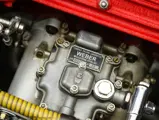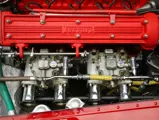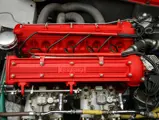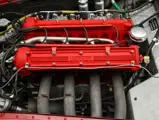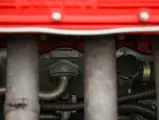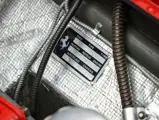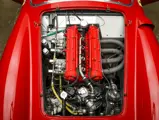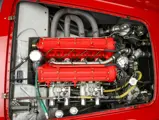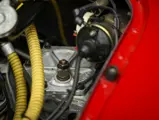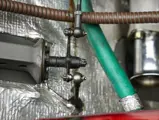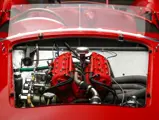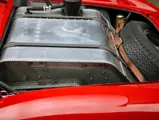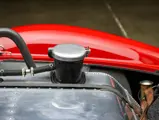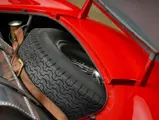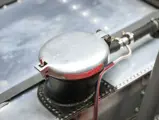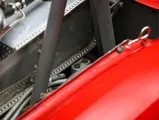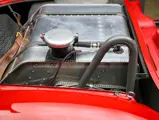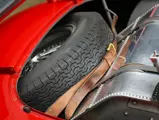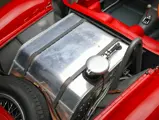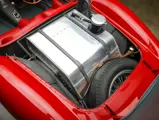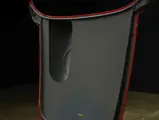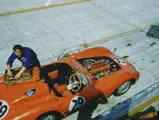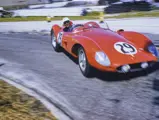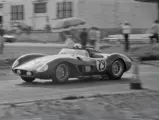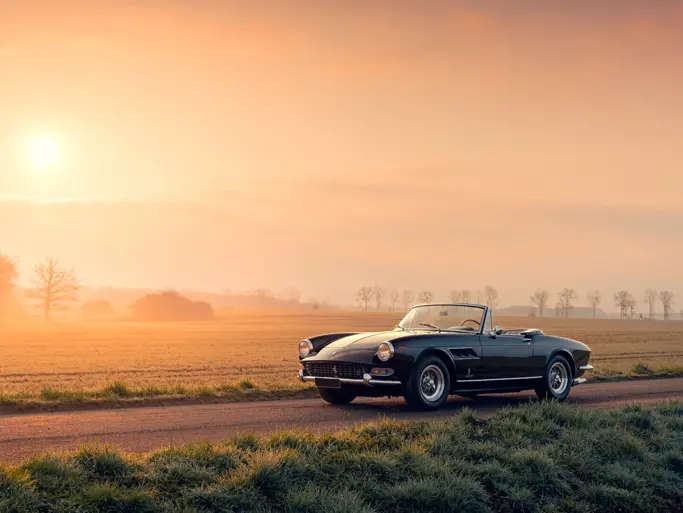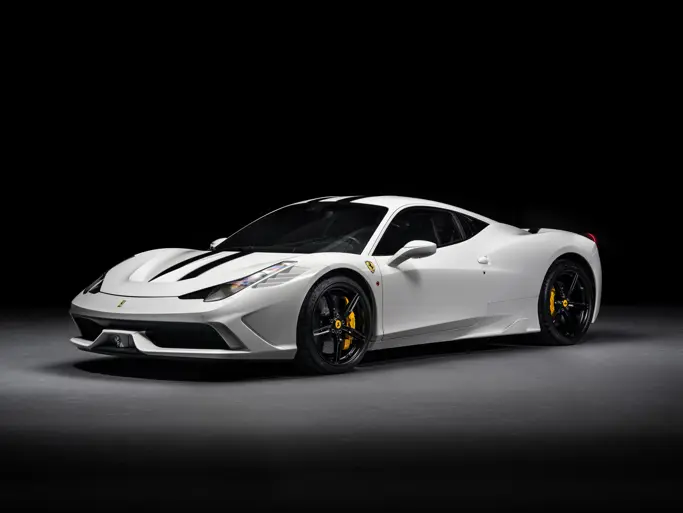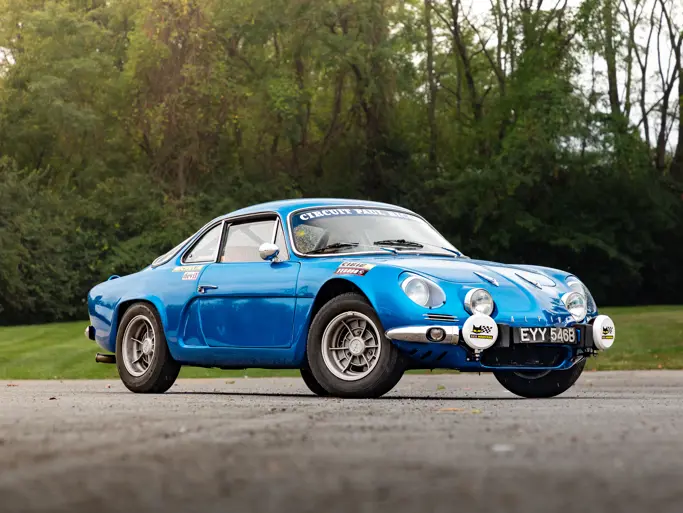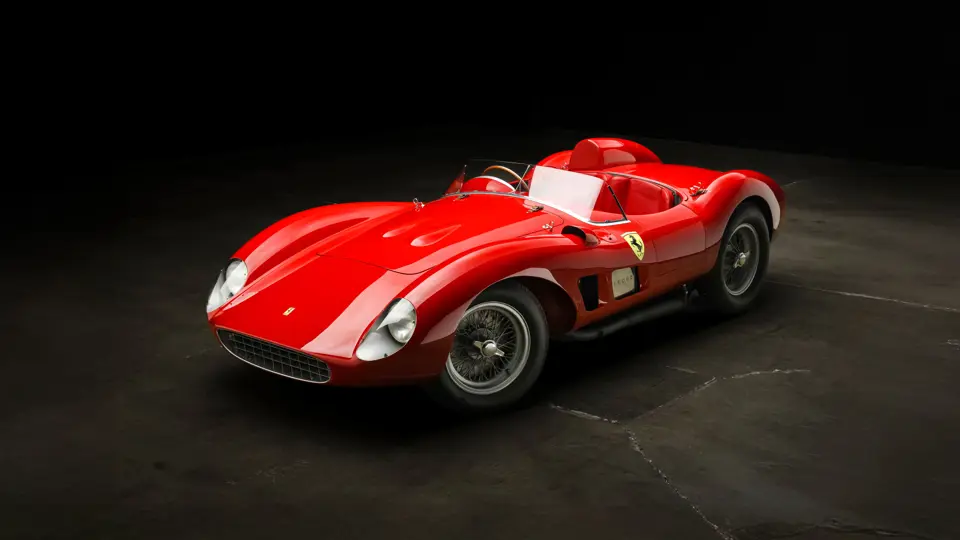
1957 Ferrari 500 TRC
{{lr.item.text}}
{{bidding.lot.reserveStatusFormatted}}
- Widely considered one of the most beautiful sports car designs of all-time
- The foundational example of only sixteen remaining 500 TRCs
- Raced at the 12 Hours of Sebring during the second round of the 1957 World Sportscar Championship
- Driven in 20 period races between 1957-1963, achieving 10 class victories and 13 total podium finishes
- A veteran of 21 editions of the Mille Miglia Storica between 1993 and 2014
- Retained by two connoisseur owners for the last 33 years
- Ferrari Classiche Red Book certified in 2005, confirming retention of its original chassis, body, engine, and rear axle
- Eligible for many of the world’s most prestigious motoring events, including the Mille Miglia Storica, Le Mans Classic, Goodwood Revival, and Colorado Grand
The genesis of the 500 TRC began in 1952 with the development of the Lampredi-designed Tipo 500 2-litre, four-cylinder engine. Although not as large in capacity as some of its V-12 cousins, the Lampredi engine packed a significant punch and carried Alberto Ascari to win Ferrari’s first F1 driver’s title in 1952, a monumental beginning for what would develop into the most legendary racing team of all-time. After repeating the feat in 1953, the four-cylinder powerplant was applied to Sports Car racing between 1953 and 1957.
The 625 TF of 1953 represented Ferrari’s first four-cylinder Ferrari Sports Racing Car, borrowing heavily from the outgoing V-12-powered 250 MM but featuring an enlarged 2.5-litre version of the tried-and-tested four-cylinder Lampredi engine. A power deficit of around 20 horsepower relative to the 250 MM was more than offset by a weight saving of some 130 kilograms; a similar trade-off being observed with other four-cylinder derivatives such as the 2-litre 500 Mondial and 3-litre 750 Monza through 1954 and 1955.
The 1956 season saw a notable departure for Ferrari, with the 500 Mondial replaced by the new 500 “Testa Rossa”. Distinguishable by its trademark red cam covers and rakish Scaglietti coachwork, the TR replaced the Mondial’s transverse leaf spring suspension with a more contemporary coil spring arrangement and abandoned the latter’s de Dion rear suspension setup in favour of a live axle with hydraulic dampers. Remarkably, the car’s weight was pared yet further to just 680 kilograms, or 1,500 lb, affording the 180-horsepower machine-spirited performance.
The introduction of the new FIA Appendix C regulations for 1957 had significant implications for long-distance racing, to which Ferrari responded by introducing the 500 TRC; the Testa Rossa’s revised suffix denoting compliance with the new ruleset. The TRC sported significantly improved Scaglietti bodywork which included a wider cockpit, a passenger-side door, a full-width windscreen, and one of the most beautifully curved fender line to ever grace a Ferrari.
Additionally, a new “C” specification version of the TR’s Tipo 131 engine employed a stronger crankshaft and connecting rods, as well as a lighter flywheel, while fuel capacity was increased to 120 litres. Significantly however, the car’s weight remained unchanged from its predecessor. Although aimed exclusively at privateers, the TRC enjoyed a stellar maiden season, in which it secured class wins in the 12 Hours of Sebring, Mille Miglia, Nürburgring 1,000 Kilometres and the 24 Hours of Le Mans. In total, 17 500 TRC examples were produced; the model, significantly, representing the final four-cylinder Ferrari Sports Racing Car ever constructed.
Bearing the chassis number 0658 MDTR, this particular example was the first 500 TRC constructed; its assembly being supervised—and, crucially, documented—by legendary Maranello foreman Amos Franchini between 19 November 1956 and 1 February 1957. It was initially sold through New York-based Ferrari importer Luigi Chinetti to Carl Haas of Chicago, Illinois; the latter subsequently becoming co-owner of the fabled Newman-Haas Indycar team. Evidently Haas kept the car only briefly, as it was acquired by Edmund P. Lunken of Cincinnati, Ohio in March 1957.
Remarkably, despite 0658 having arrived in the United States only a matter of weeks earlier, Lunken’s first competitive outing at the wheel of his new charge was to be in the 1957 12 Hours of Sebring on 23 March. In the 1953 edition of the race, Lunken had shared his Ferrari 166 MM with fellow gentleman driver Charles “Chuck” Hassan to secure a superb class win and sixth place overall, and for 1957 the pair agreed to reunite at the wheel of 0658. A bumper grid of some 66 cars assembled at the Floridian track, including two Scuderia Ferrari-entered Ferrari 315 Sports for Collins/Trintignant and de Portago/Musso. A further Factory-prepared Ferrari 290 MM was present for home favourite Phil Hill and von Trips. In the up-to 2.0-litre category, 0658 was ranged against three other 500 TRCs—the most highly fancied being the Temple Buell-owned sister car of Richie Ginther and Howard Hively.
During the race, despite a strong early pace from Lunken and Hassan, the car was eventually forced to retire with a serious fuel leak after 143 laps. Overall, Sebring ’57 proved to be Maserati’s day of days; the Behra/Fangio 450S leading home Moss and Schell in their 300S. In the up to two litre class, Ginther and Hively proceeded to secure class victory—and a creditable tenth overall—in their 500 TRC.
Following Sebring, Lunken reverted to SCCA racing thereafter, with the Ohioan duly finishing a creditable first in class and third overall, behind Ed Crawford’s Porsche 550RS and Jack Ensley’s D-Type Jaguar at Louisville, Kentucky on 5 May. This was promptly followed up by another first in class and second overall at Elkhart Lake on 23 June, while a trip to Marlboro, Maryland on 14 July yielded two more class victories for the improving Lunken.
After second and third-place finishes in the Lawrenceville races in late August, in early September, both Lunken and 0658 returned to Wisconsin for the Road America 500 miles. Another high-quality field saw Phil Hill take overall victory in his Ferrari 315S, ahead of Carroll Shelby’s Maserati 300S and Crawford’s Porsche. However, another solid performance by Lunken saw him finish first in class and seventh overall, just behind the Ferrari 290MM of John Kilborn and Howard Hively. Intriguingly, 0658 was entered for the season-closing Nassau Trophy Race, but neither car nor Lunken evidently materialised. Aside from two guest driver appearances in Lunken’s friend Jim Johnston’s 250 Testa Rossa, Lunken concluded his Ferrari racing career at the end of 1957 and sold the TRC in 1958 to Roy Cherryholmes, a rancher in Jacksboro, Texas.
Cherryholmes made at least one appearance in the car on 8 June 1958 when he achieved a second in class in race 10 at the 3rd Annual Texas Championship Sports Car Races at Eagle Mountain in Fort Worth, Texas. The car was subsequently sold to Todd Aikens who raced the car across Texas, Colorado, and Louisiana in 1959, achieving first in class in race 4 and race 7 during the 1st Carrera del Alamo races in Hondo, Texas in April 1959, as well as a second in class at the sport car races in Galveston Island, Texas in June 1959 and finally two more first in class finishes at the Mansfield Labor Day races in Louisiana in September 1959. By 1960 the TRC had found its way back to Carl Haas. Haas drove the car in race 6 of the Elkhart Lake June Sprints at Road America where he finished fifth in class.
In 1961 ownership had passed to Ken Hutchison of Tower Lake, Illinois, one of the very first Ferrari ‘collectors’ in the United States. In 1967, 0658 was sold to Birmingham, Michigan-based General Motors engineer—and longtime FCA Chairman—Fred Leydorf, who in turn exchanged the car with Jack P. Reuter of St. Louis, Missouri in 1974. A serial Ferrari collector whose garage at one time or another included two 250 GT SWBs, a 166 MM, a 250 MM Coupe, and a 250 Testa Rossa, remarkably Reuter’s designated “trade-in” vehicle was no lesser car than the ex-works Ferrari 330LM/250 GTO #3765, which RM Sotheby’s were proud to sell in November 2023.
A sequence of four short-term US-based owners ensued between 1985 and 1991, but in 1992 0658 returned to Europe for the first time in thirty-five years, duly joining the collection of dedicated Ferrari enthusiast Claudio Caggiati of Parma, Italy. In Sig. Caggiati’s ownership, the car competed in the 1993 and 1994 editions of the Mille Miglia Storica, before being entrusted to master craftsmen Carrozzeria Brandoli of Montale, near Modena, for full restoration in late 1994 and 1995. Duly completed, 0658 competed in the event a further 19 occasions over the next two decades. The car was also granted Ferrari Classiche Red Book certification in 2005 confirming its original chassis, body, engine, and rear axle, with the correct type gearbox, internal number 6C which actually is from the sister TRC chassis 0660 MDTR.
Following over 20 years of ownership with Sig. Caggiati, 0658 passed into the world-class collection of the consigning owner, where it has remained for over a decade. In his custody, the car has been used only sparingly, and never shown publicly, so as to retain its priceless originality.
The late 1950s will forever be known as the most aesthetically beautiful era for racing cars. Where coachbuilders were guided by visual impact more than mathematical equations, Ferrari creations by Scaglietti and Pininfarina are the mechanical works of art that have stood the test of time. Chief among them is the 500 TRC, genesis to the legendary 250 Testa Rossa, and contemporary to the mighty 315/335 Sport models, the TRC is without doubt one of the most exquisitely proportioned of all sports racers. Such appeal, allied to its remarkable performance, relative ease of maintenance, and tremendous versatility makes the car ideally suited to the myriad events for which it is eligible, whether they be race, tour, or concours in focus. In the case of chassis 0658, these attributes are further enhanced by its impeccable provenance and compelling race history, rendering it one of the most historically significant four-cylinder Ferraris to be offered for sale in recent times.

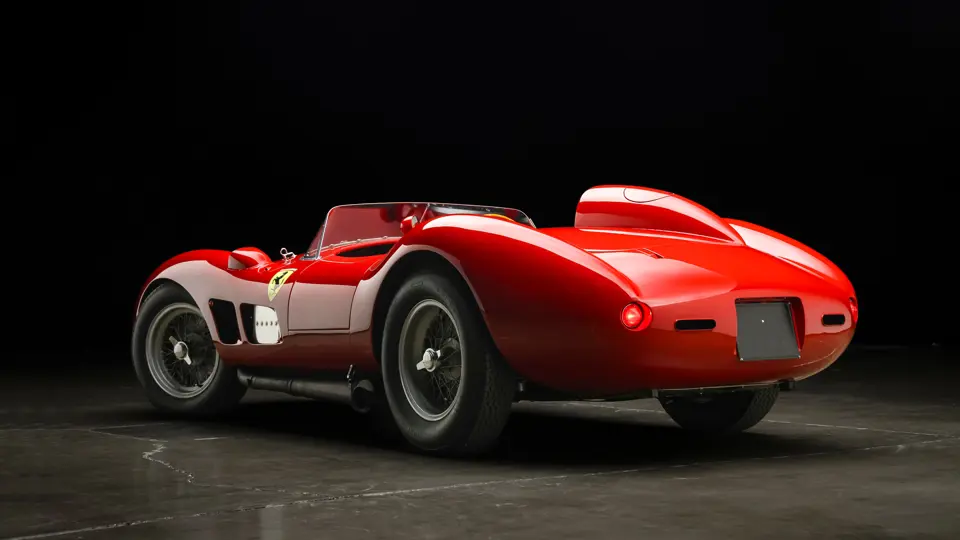
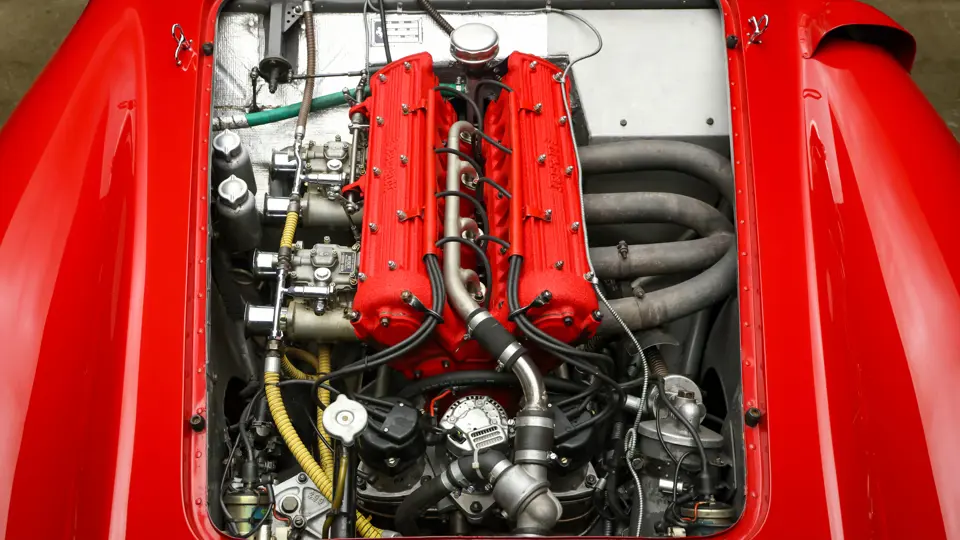

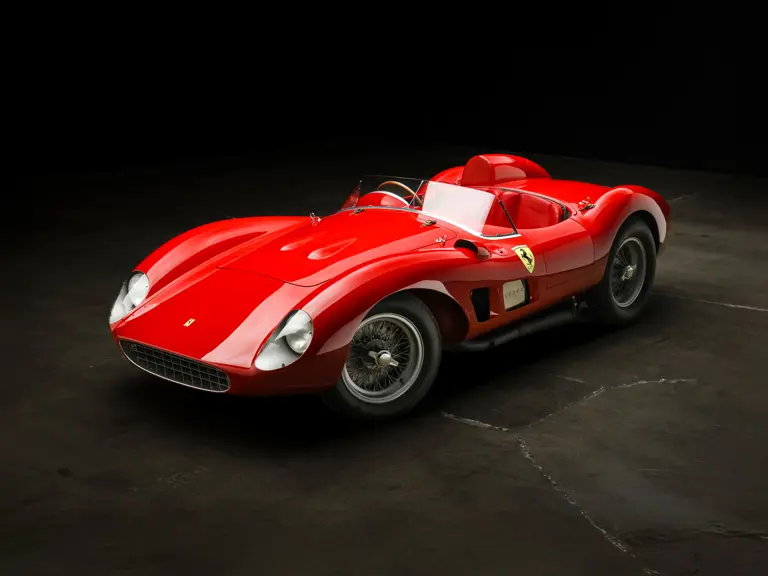
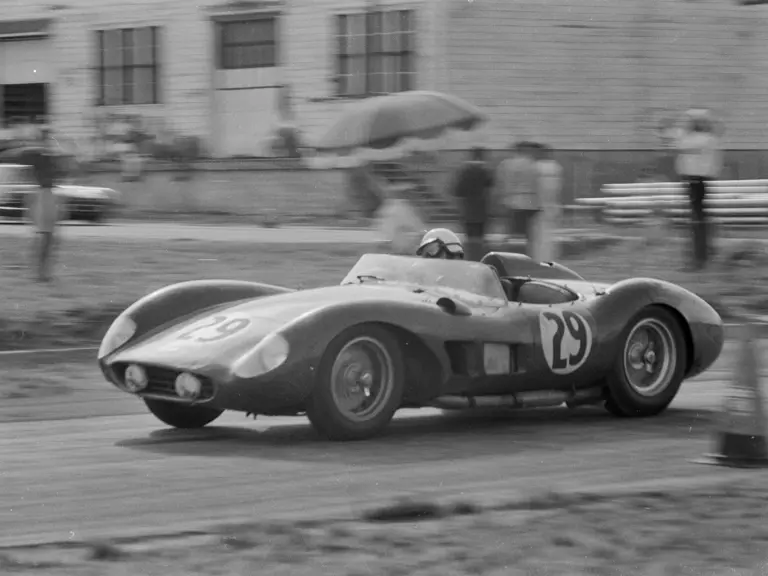
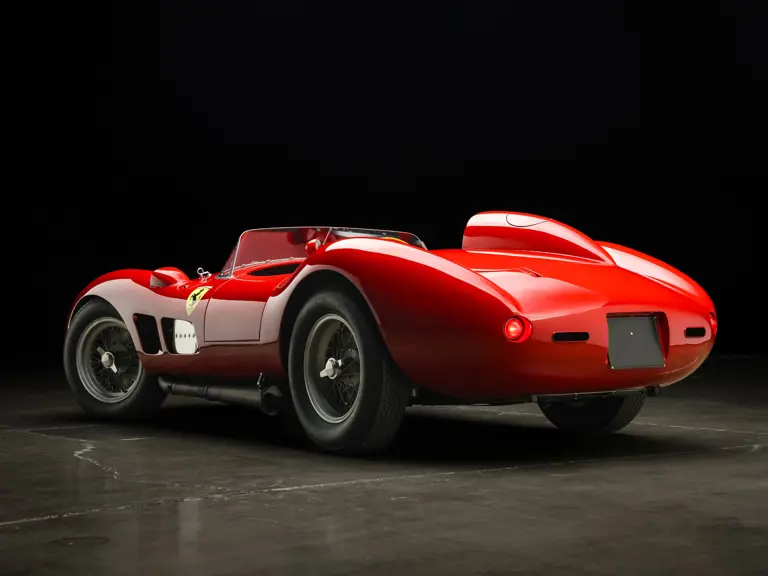
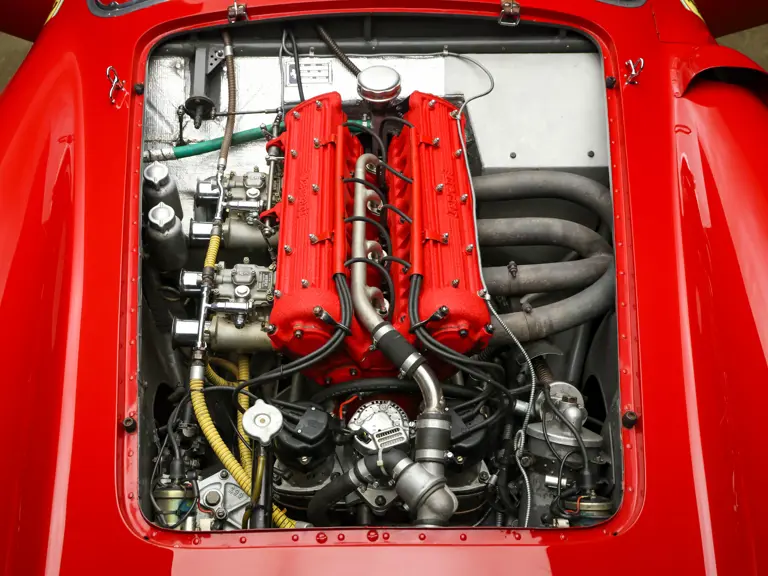
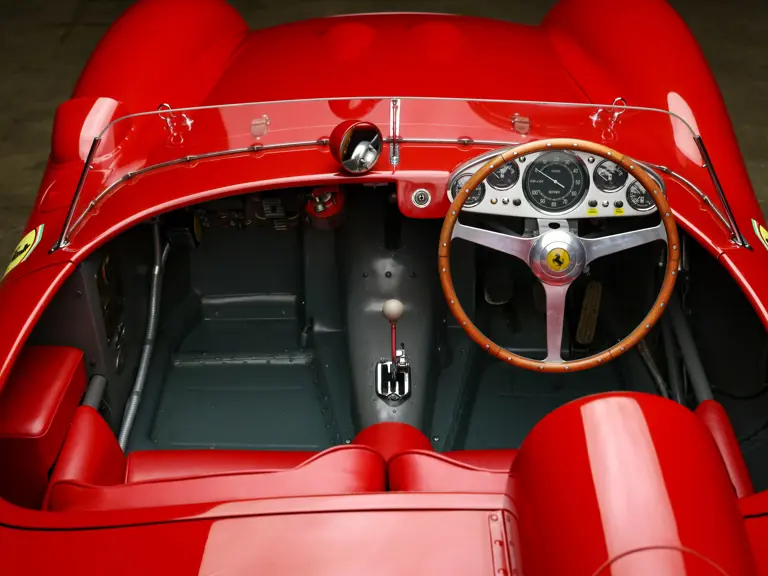
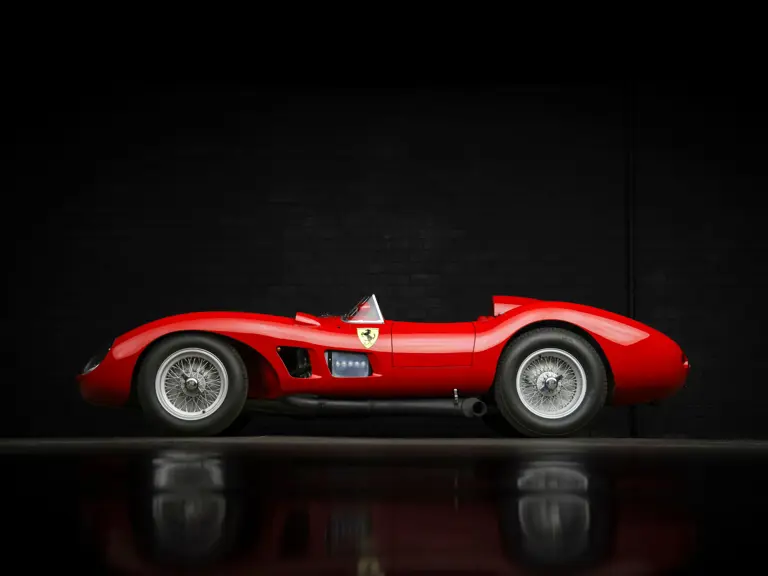

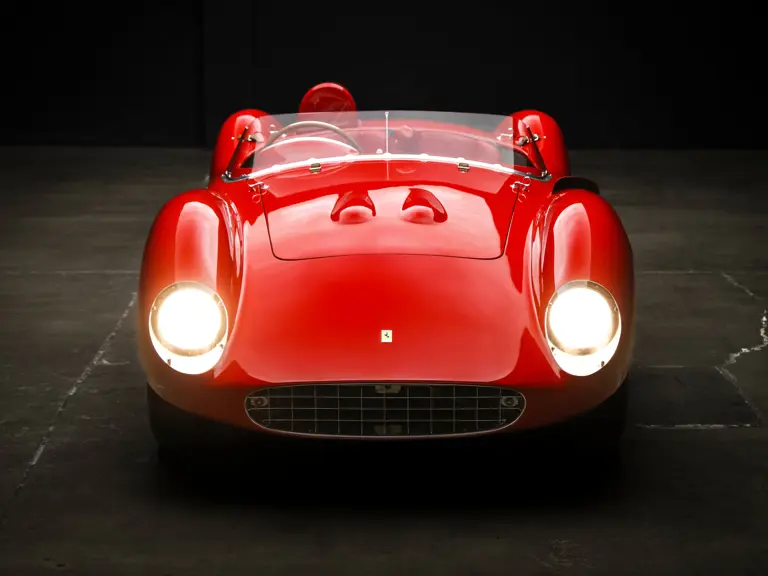
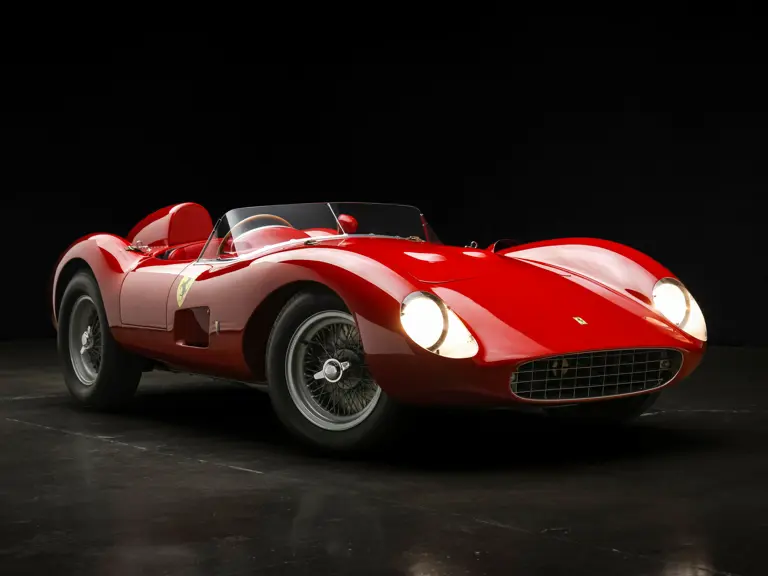
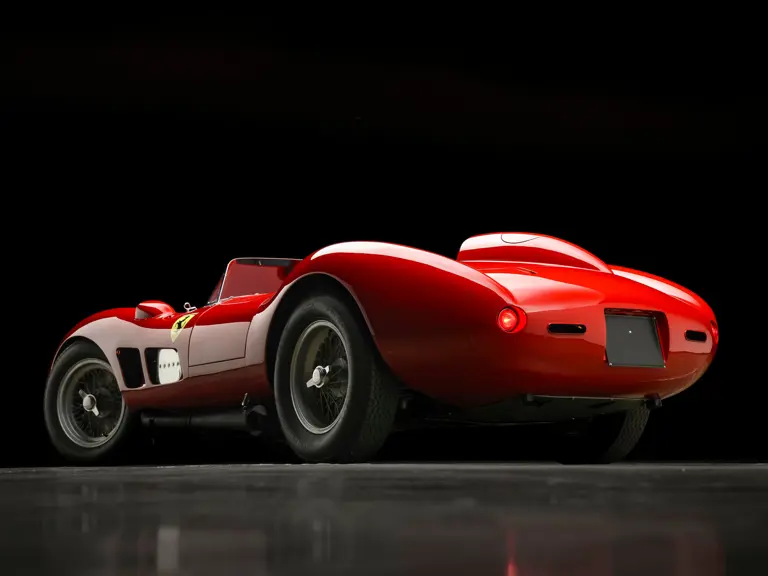
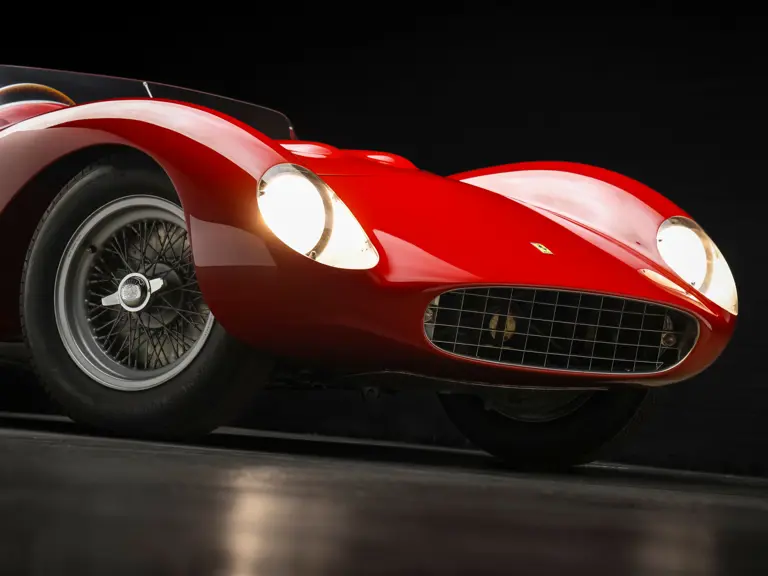
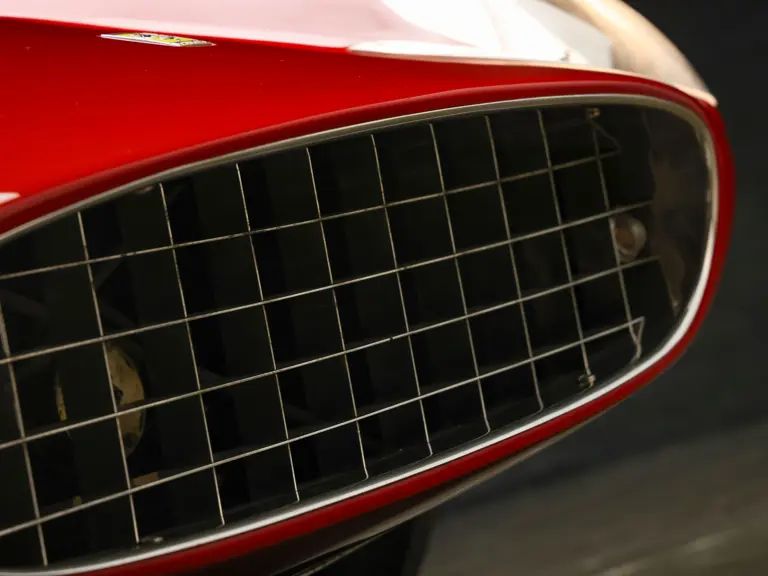
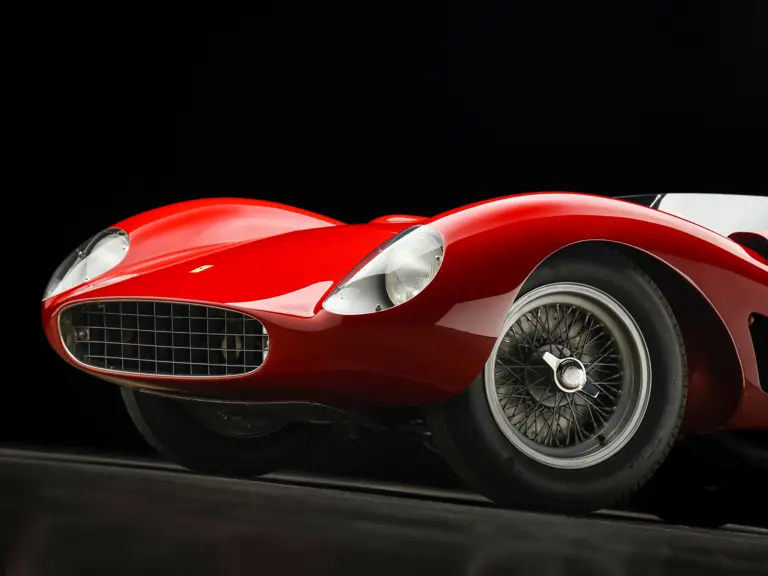
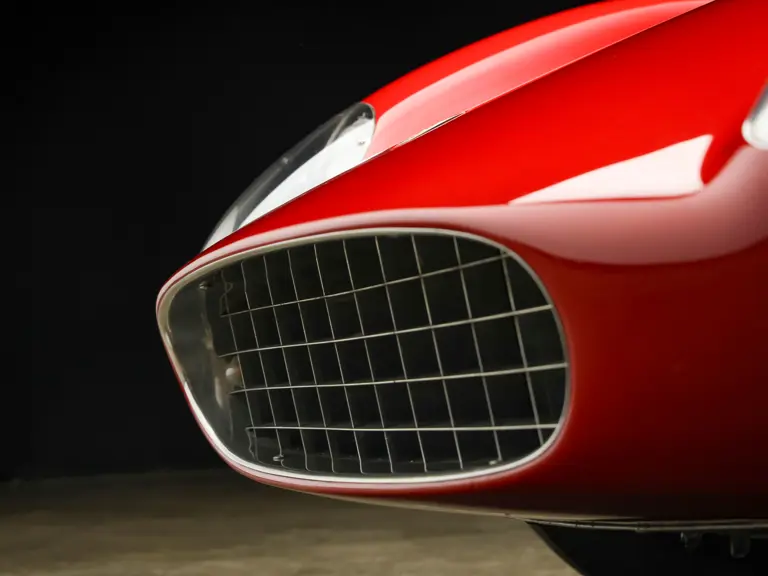
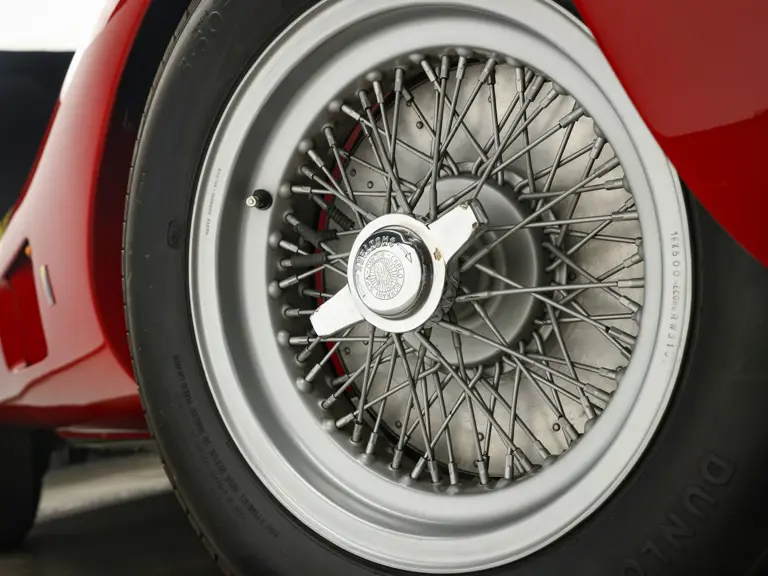
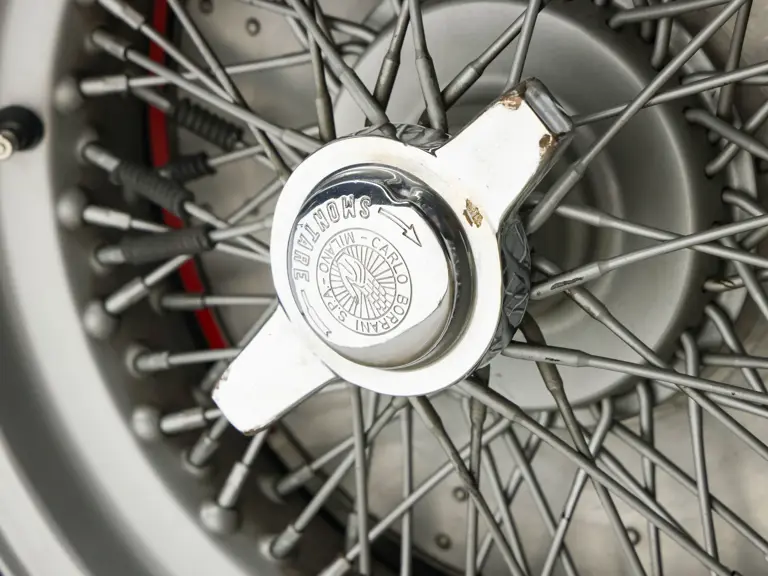
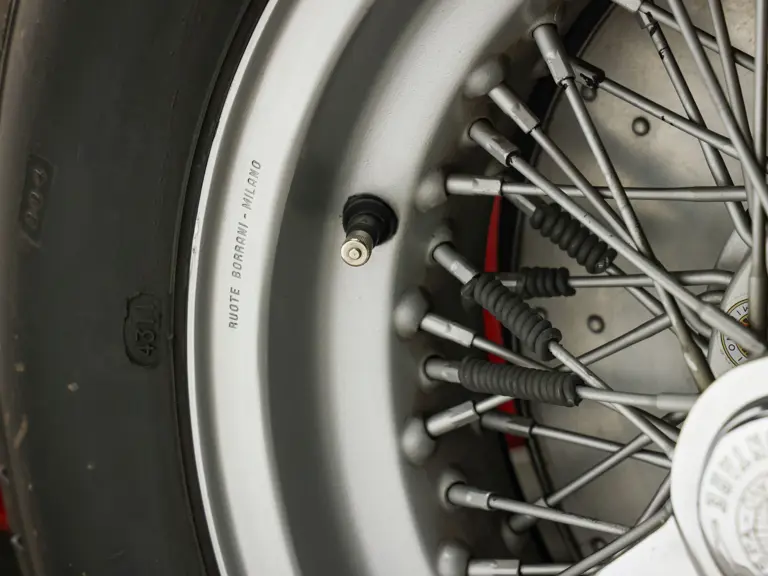
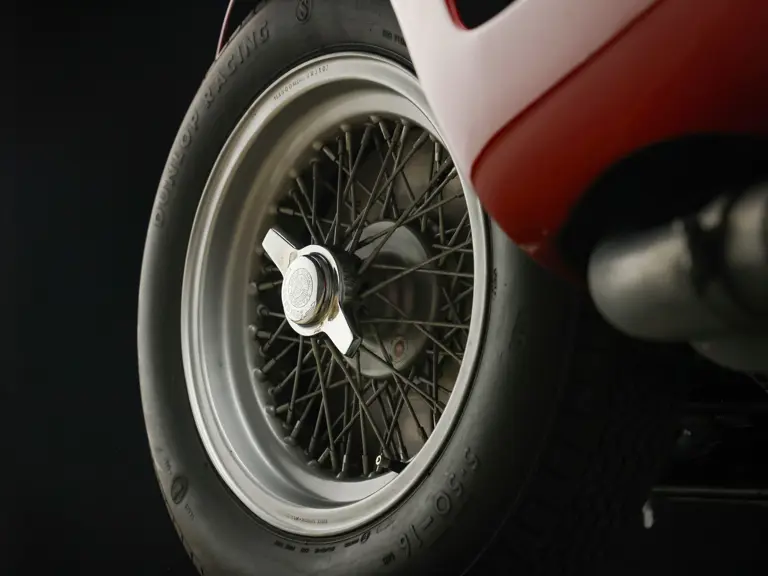
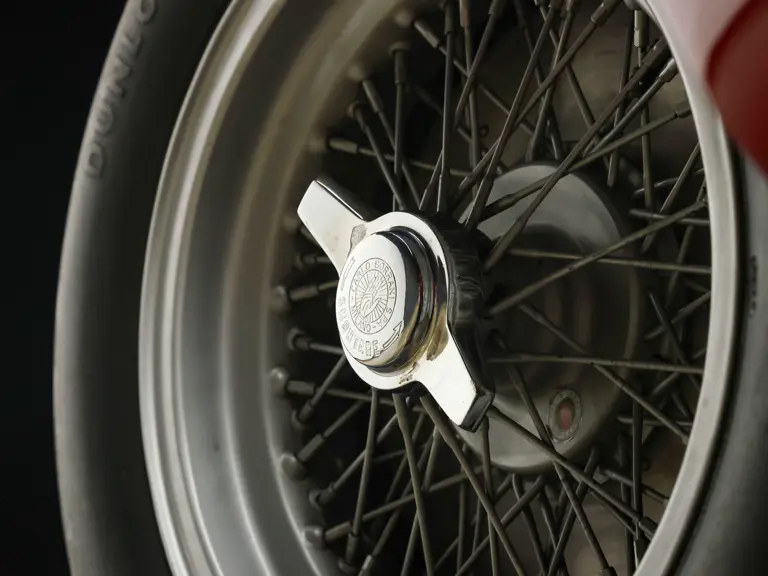
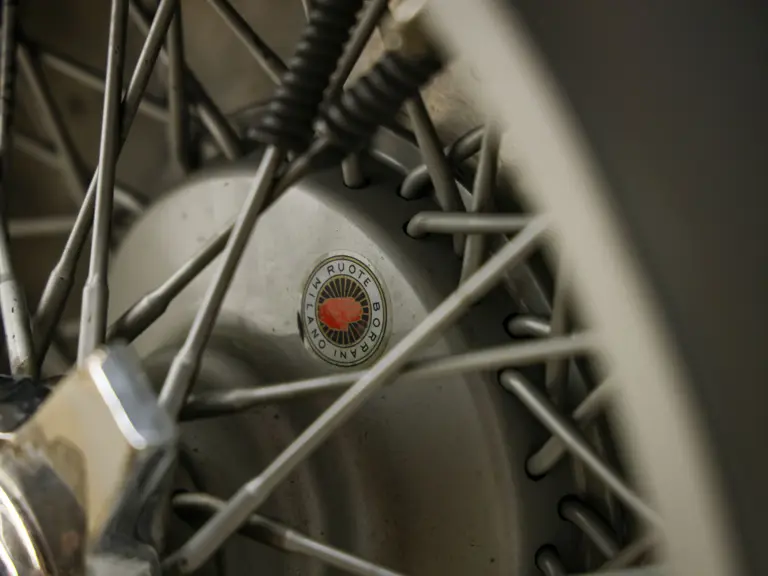
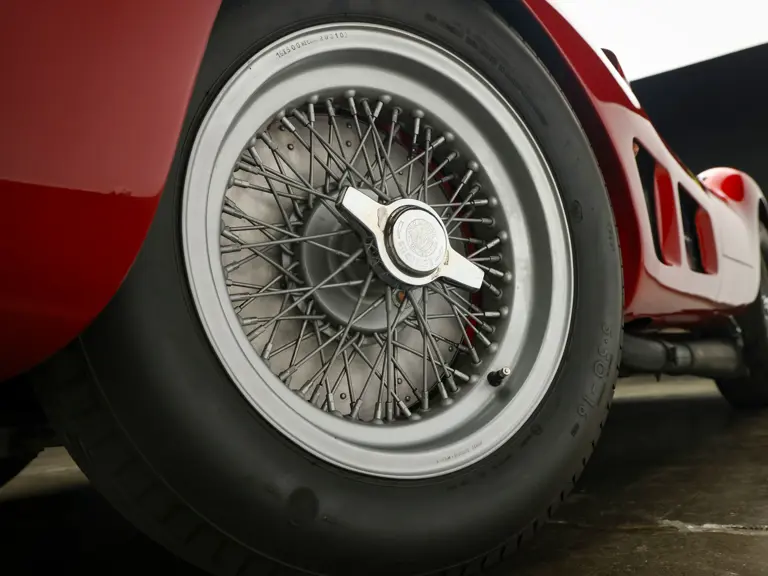
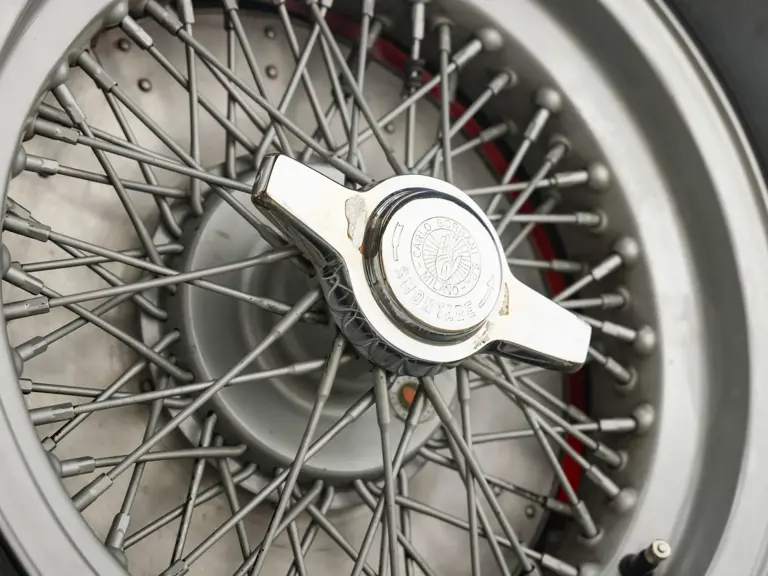
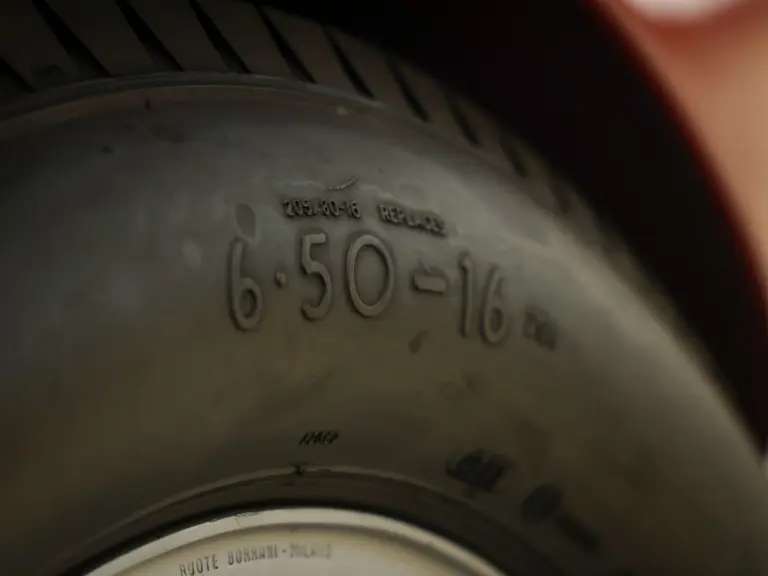
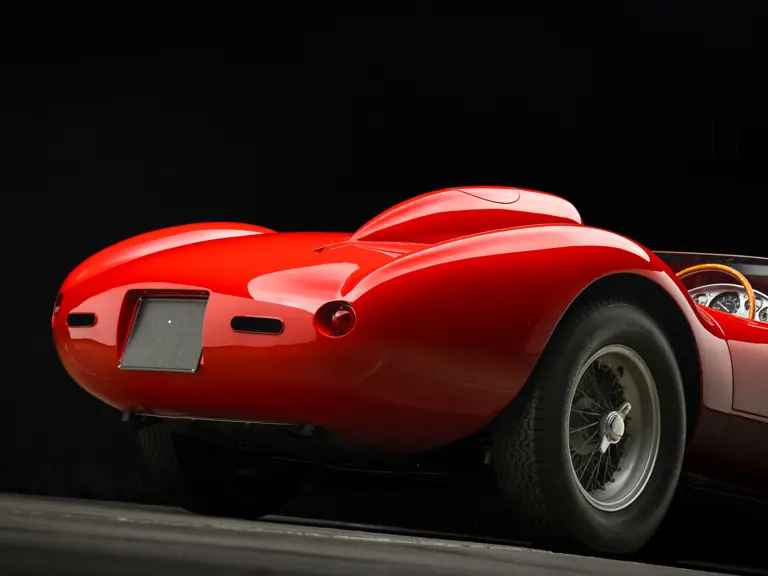
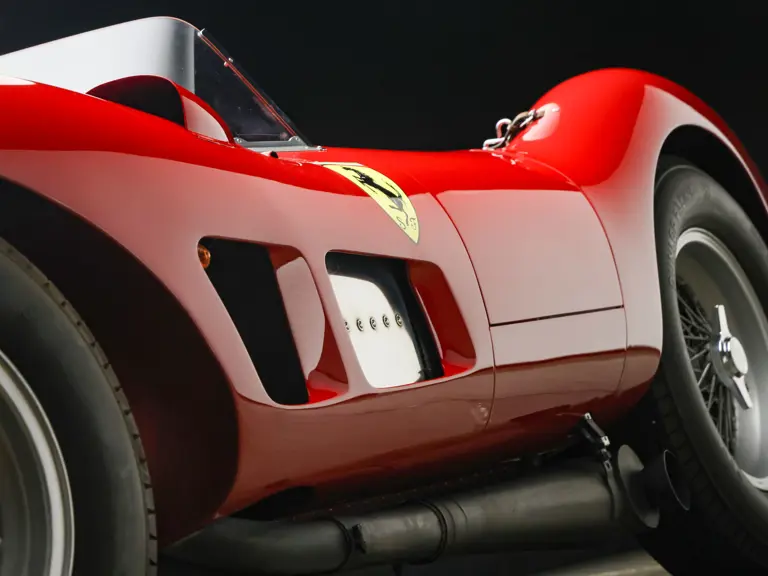
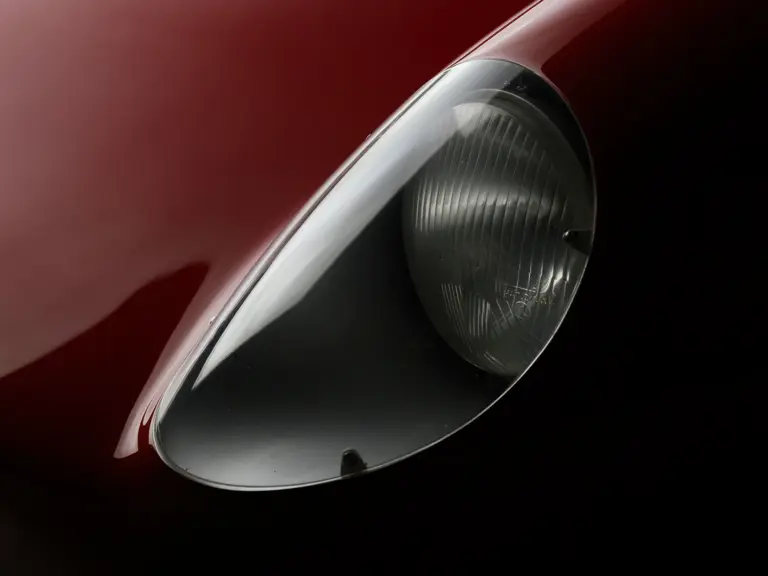
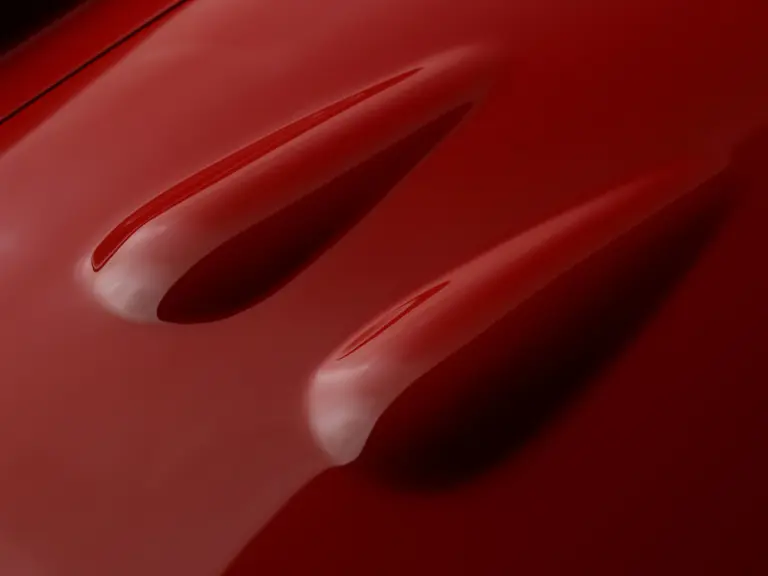
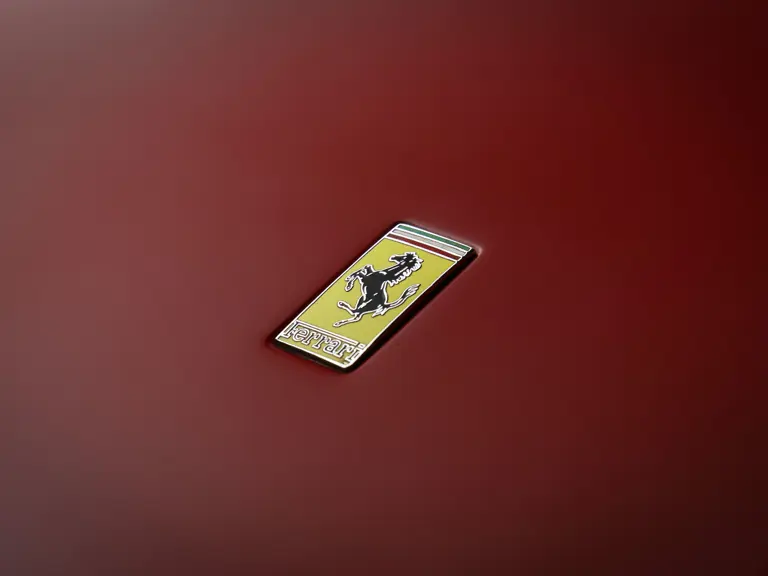
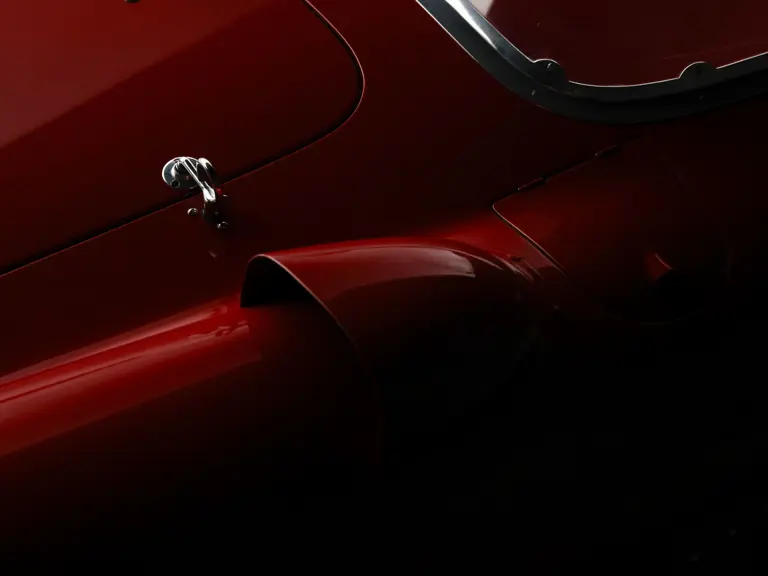
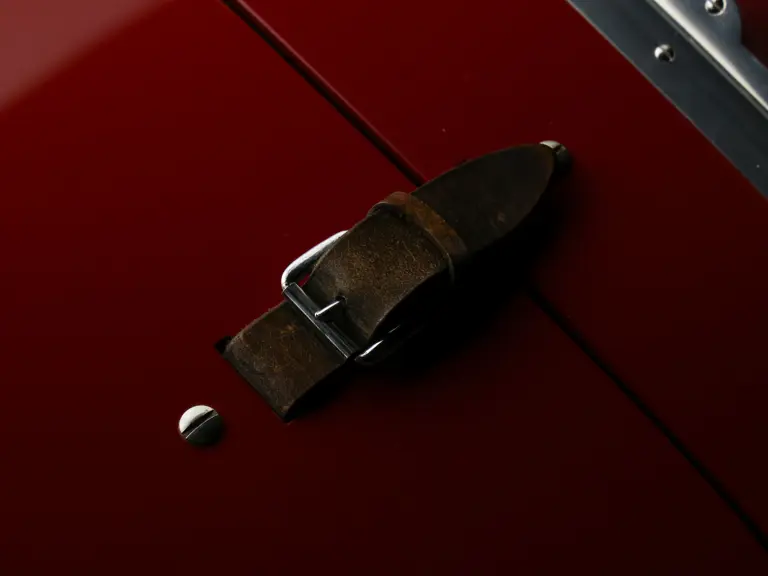
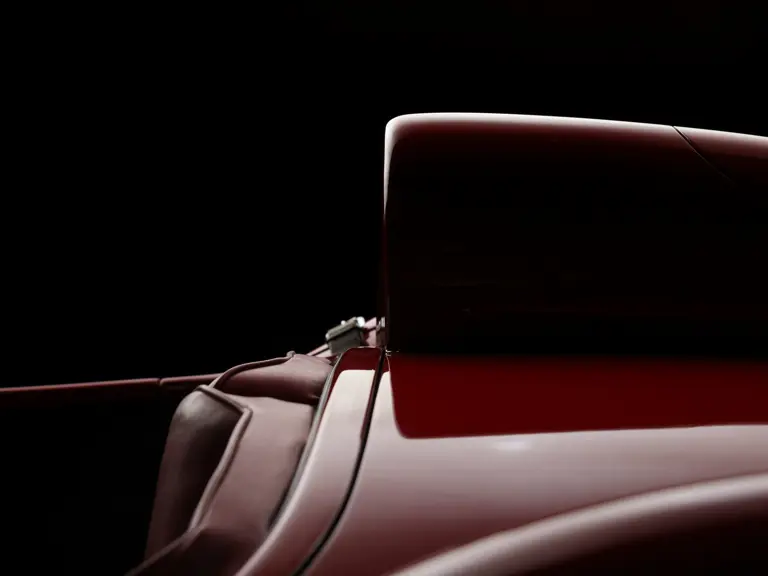
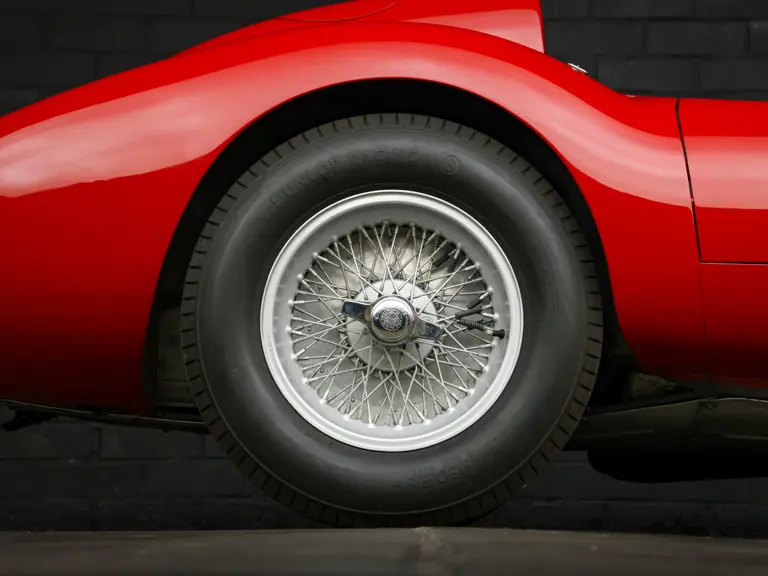
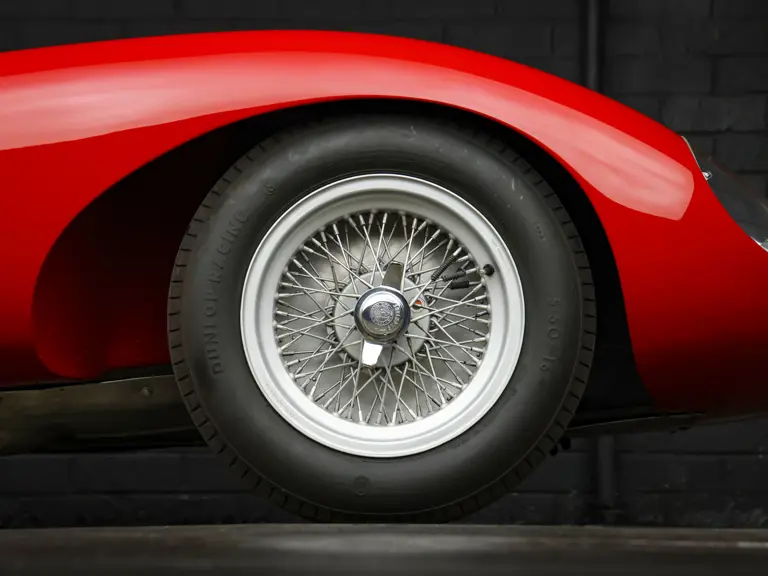
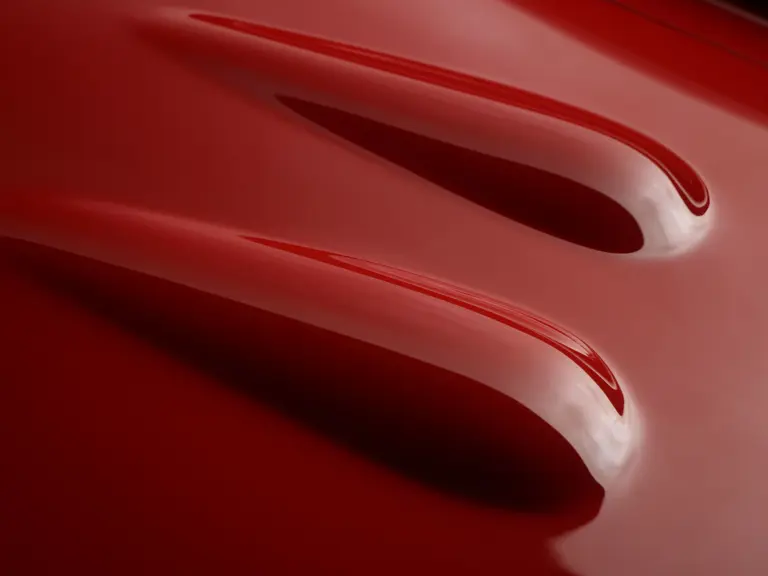

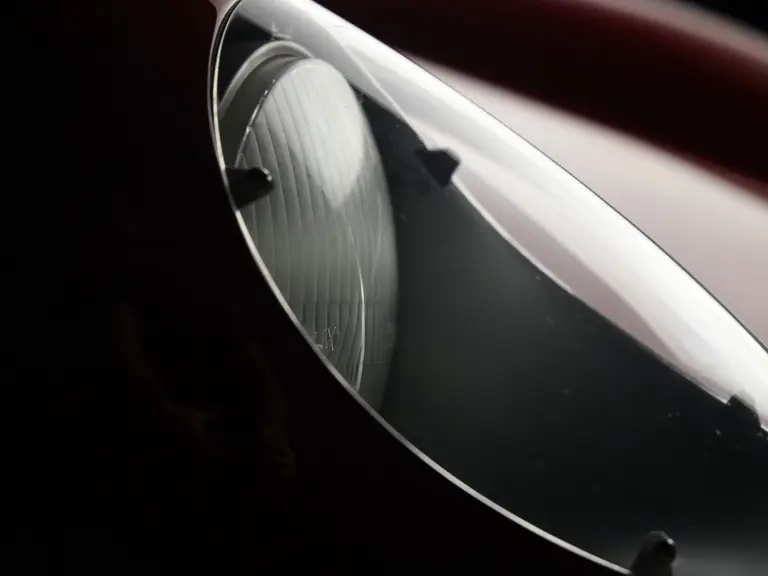
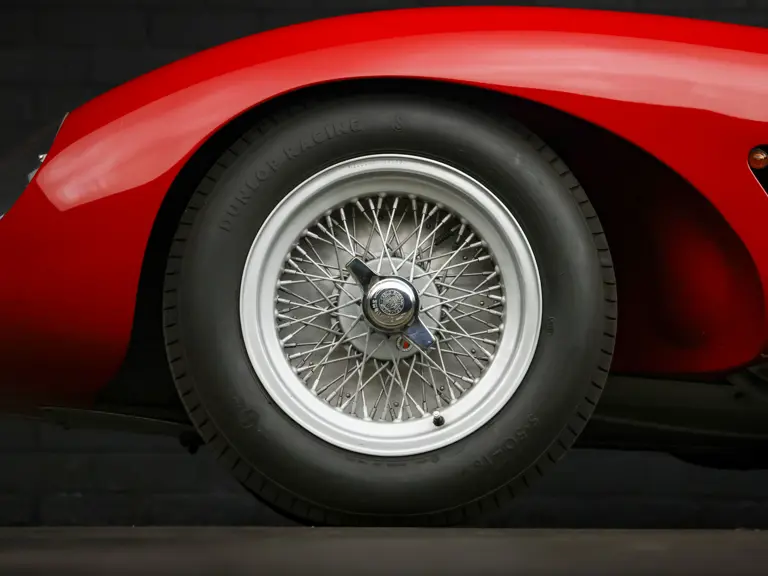
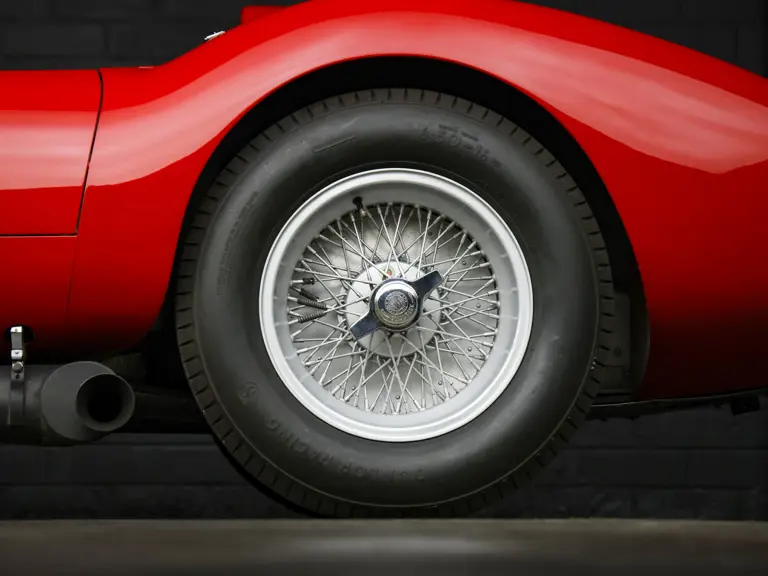
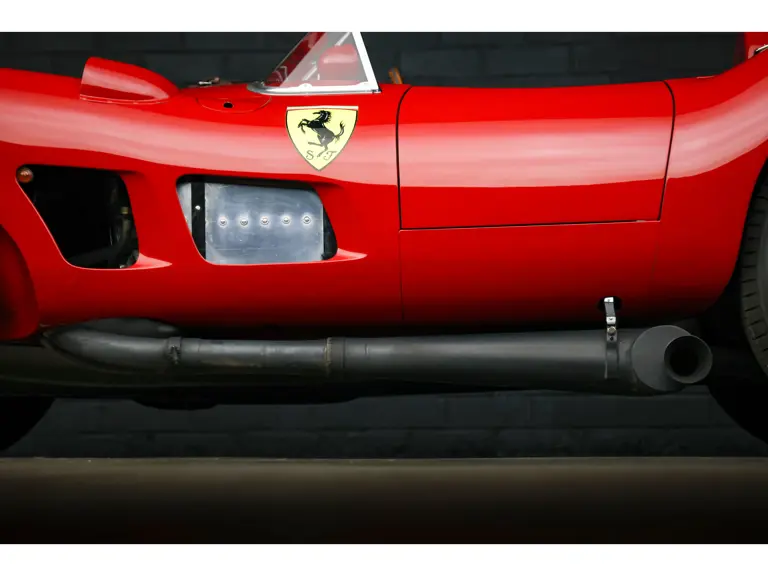
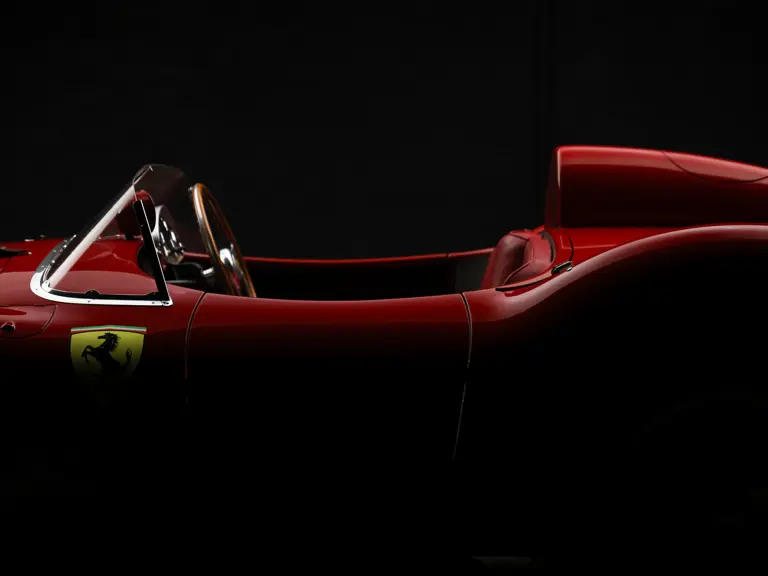
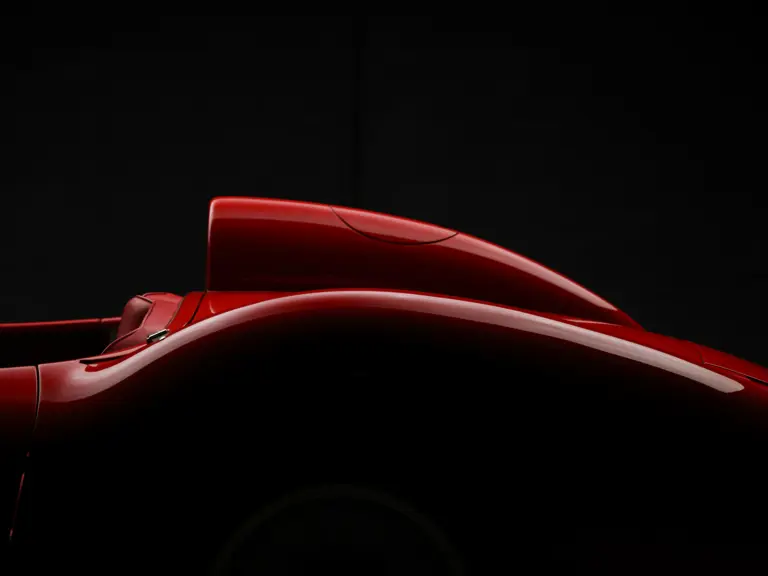
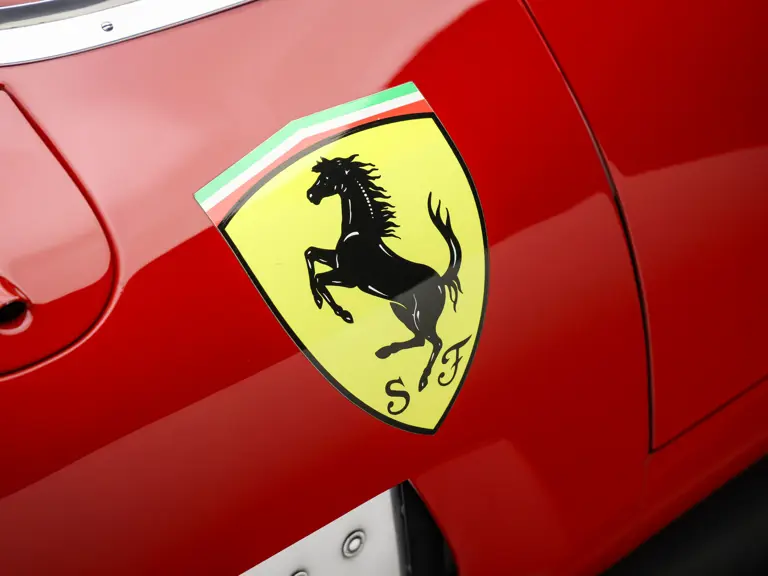
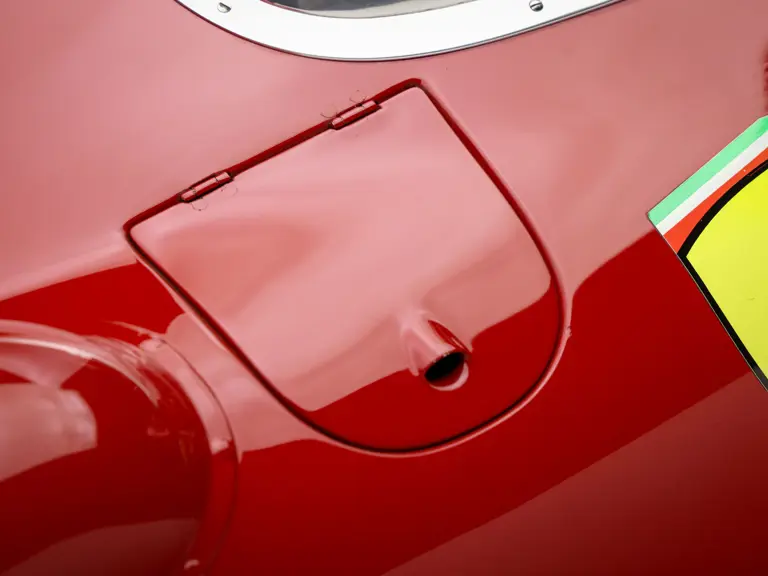
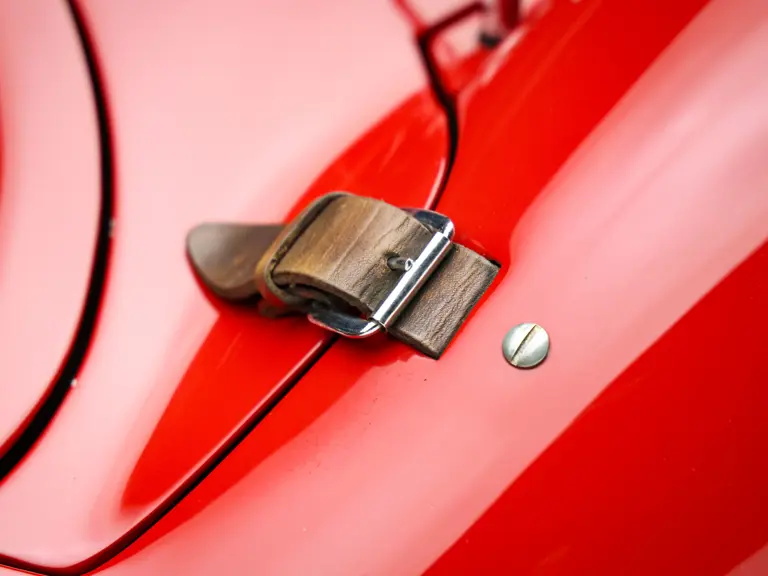
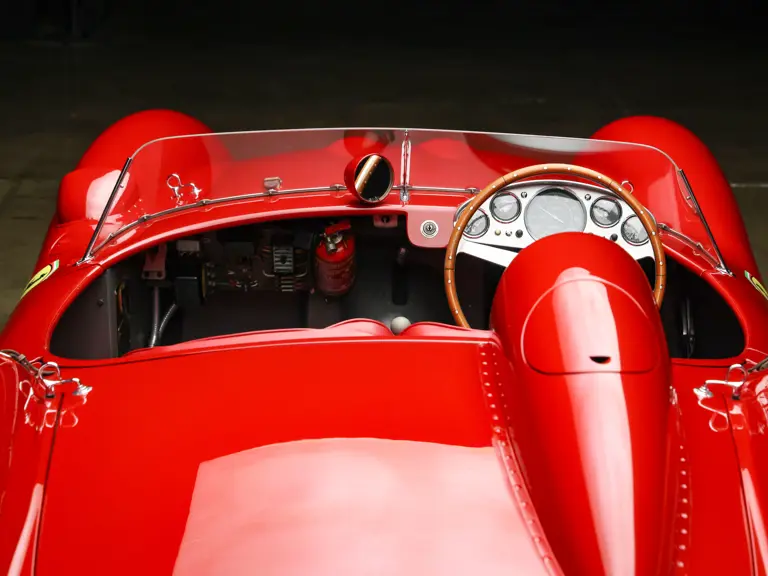
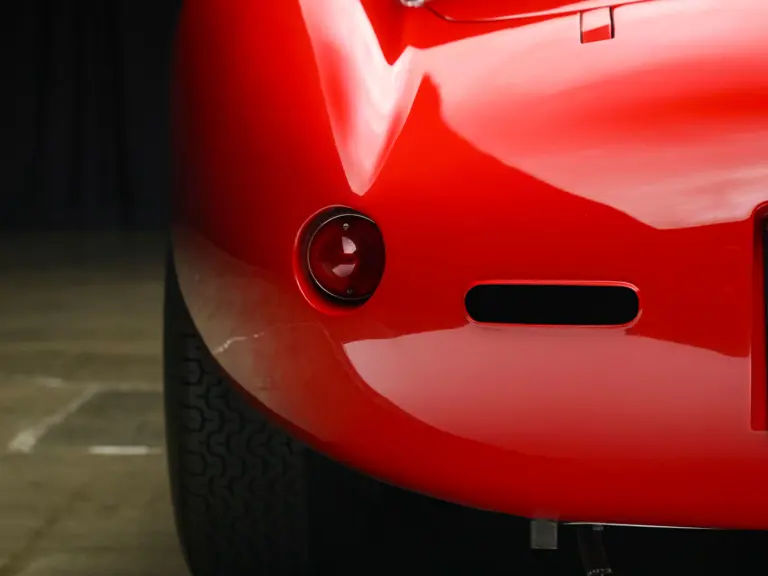
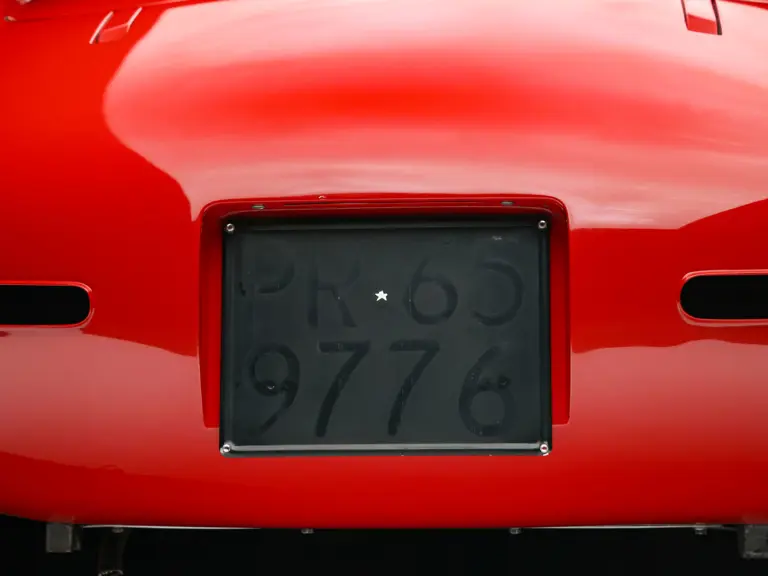
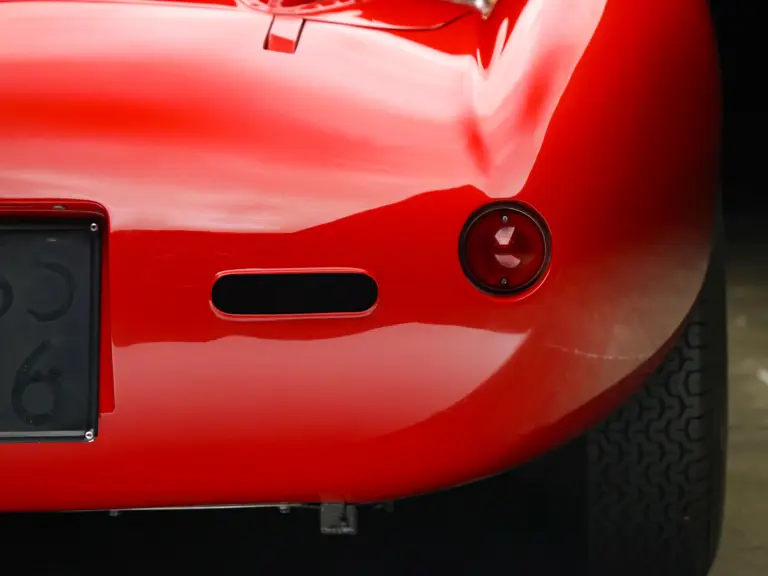
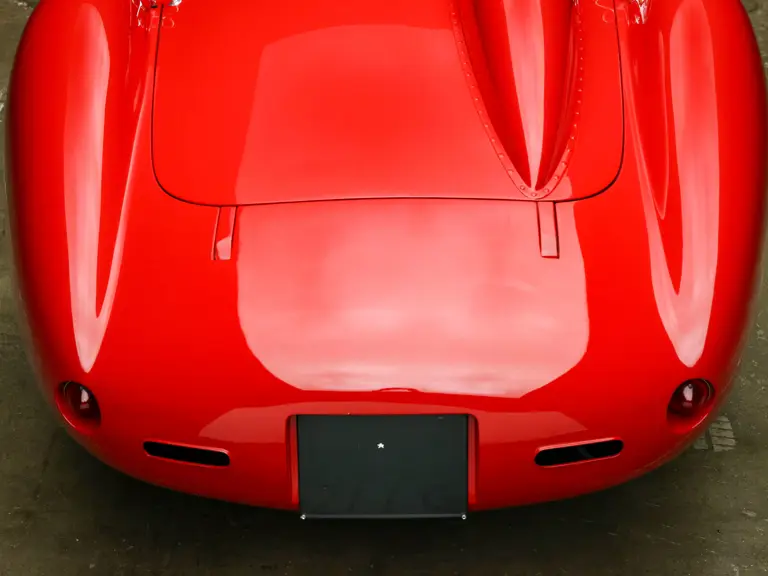
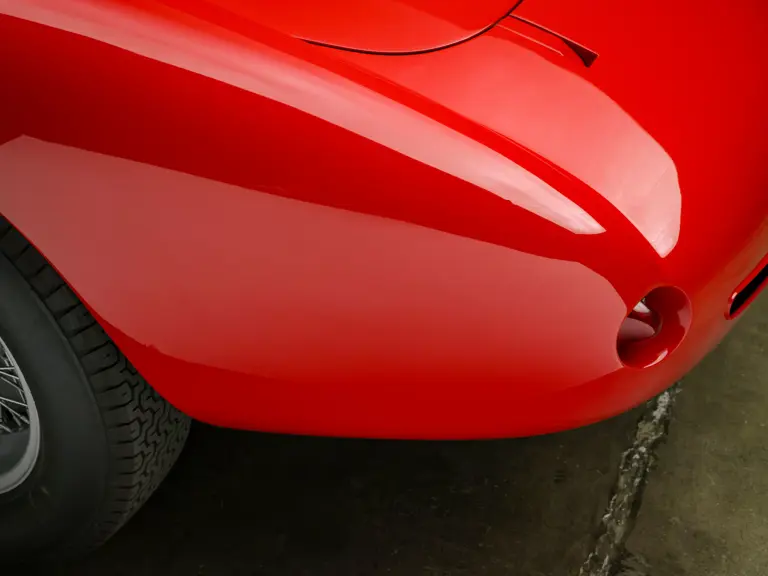
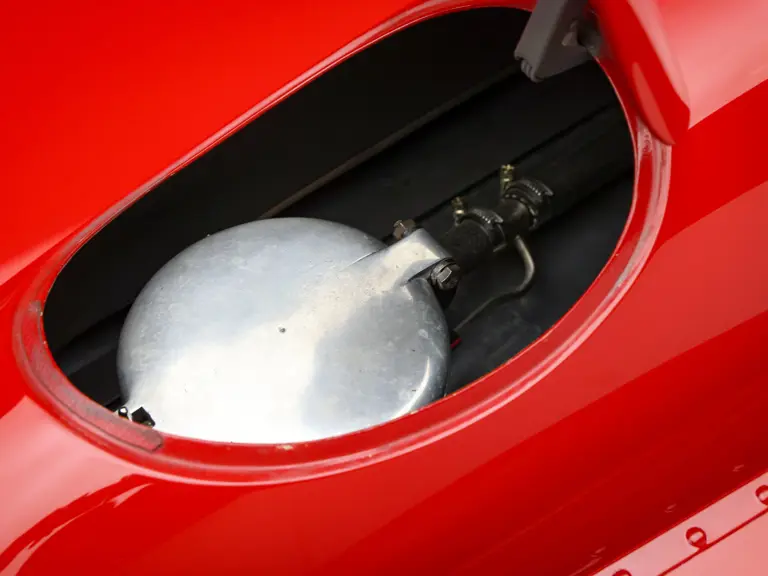
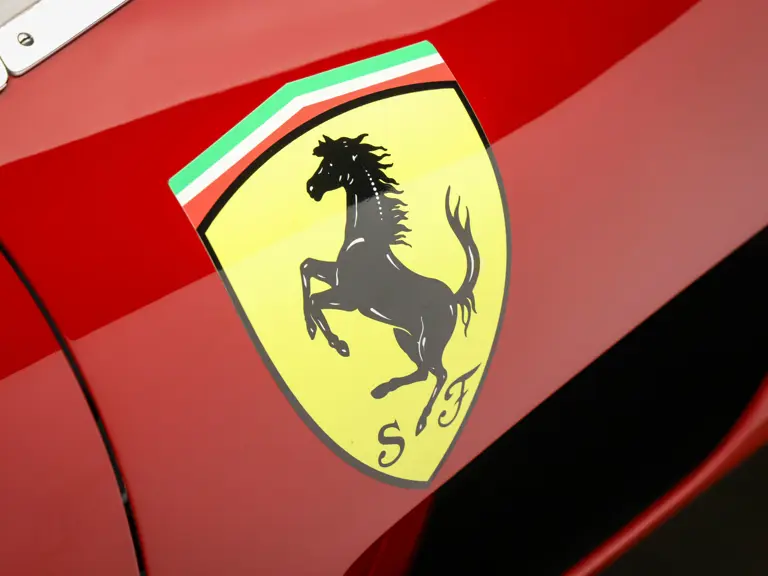
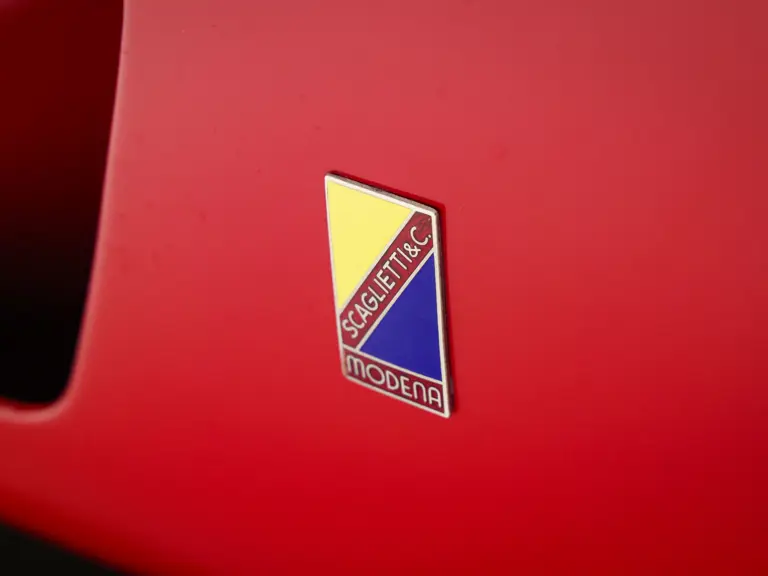
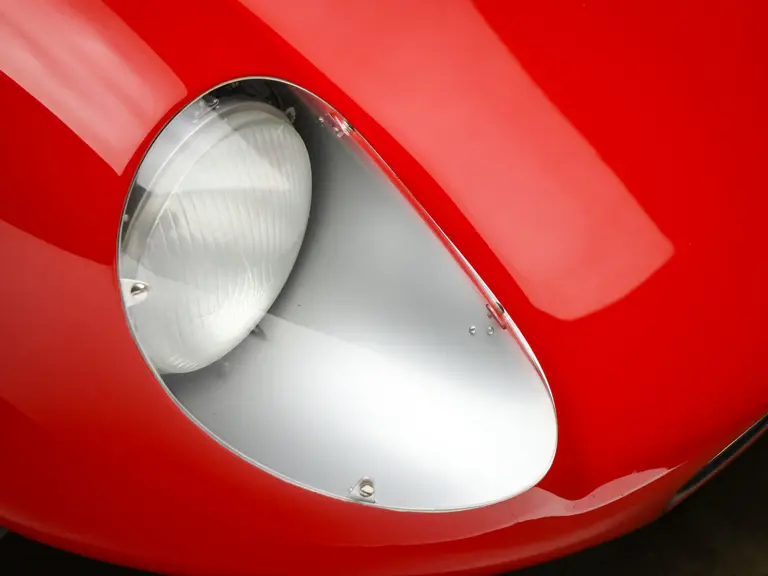
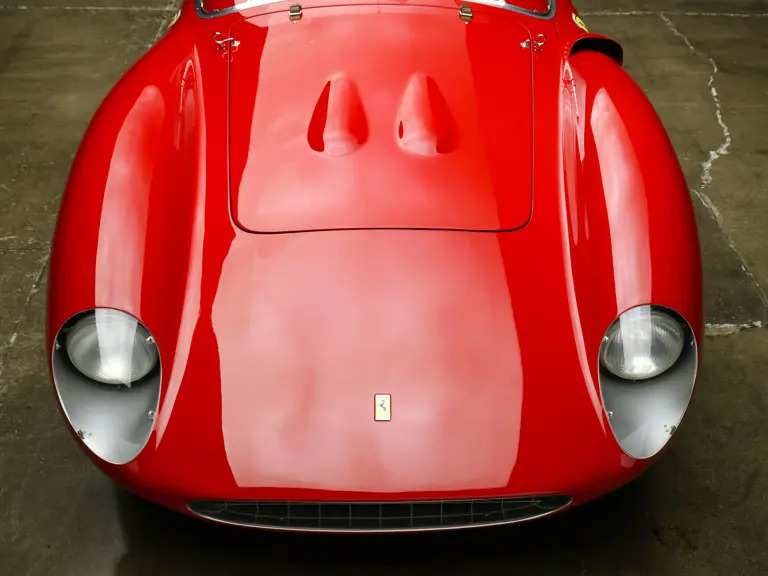
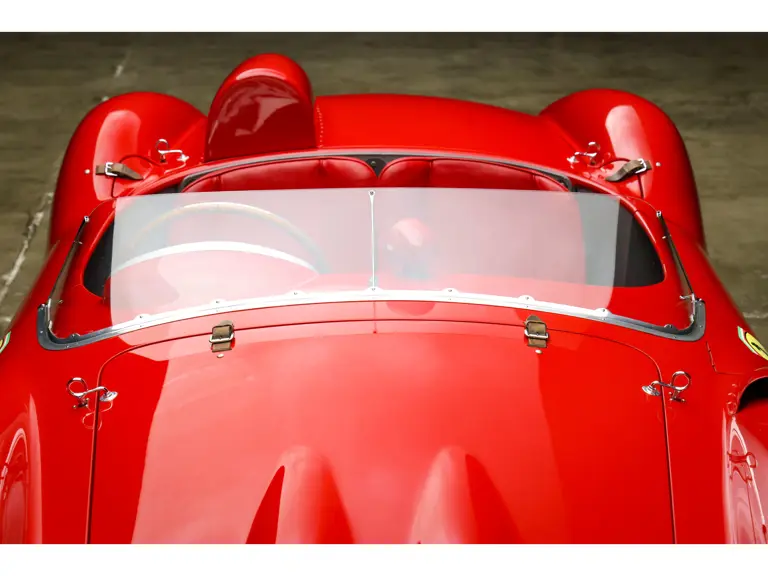
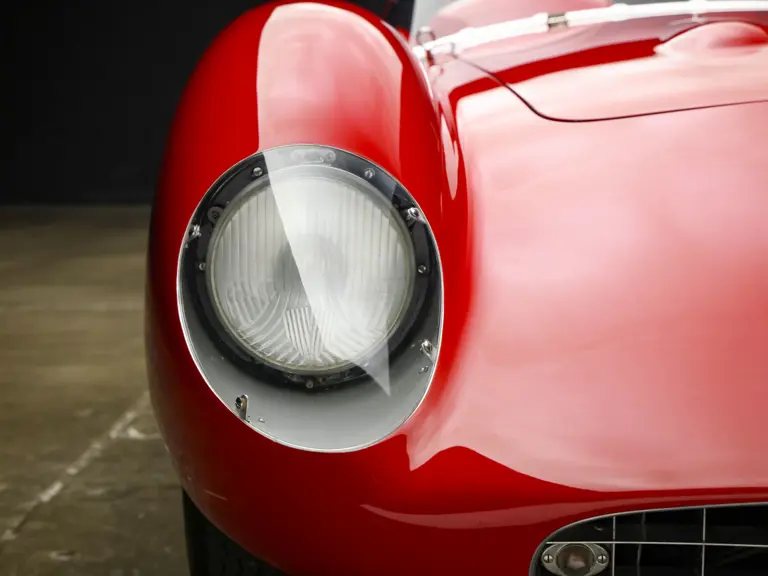

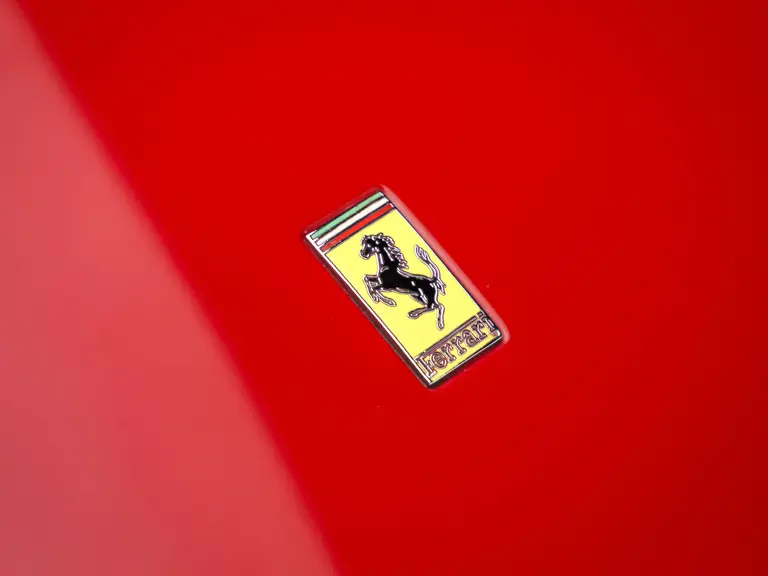
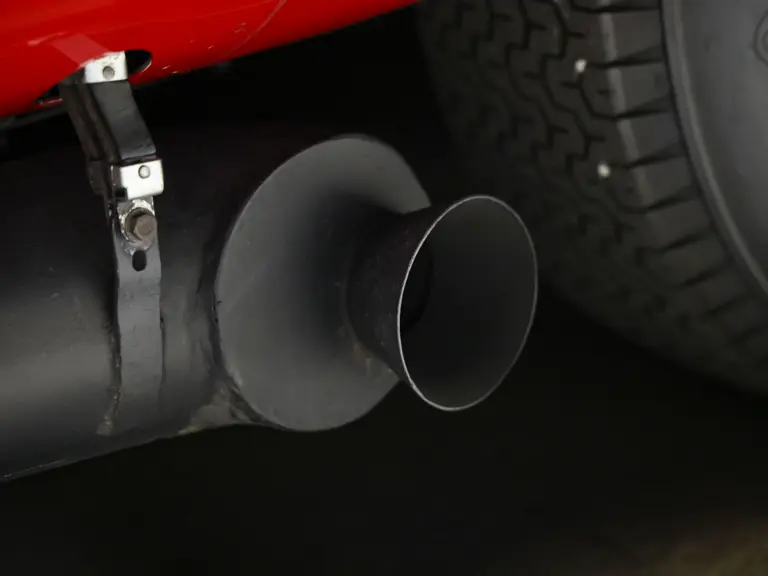
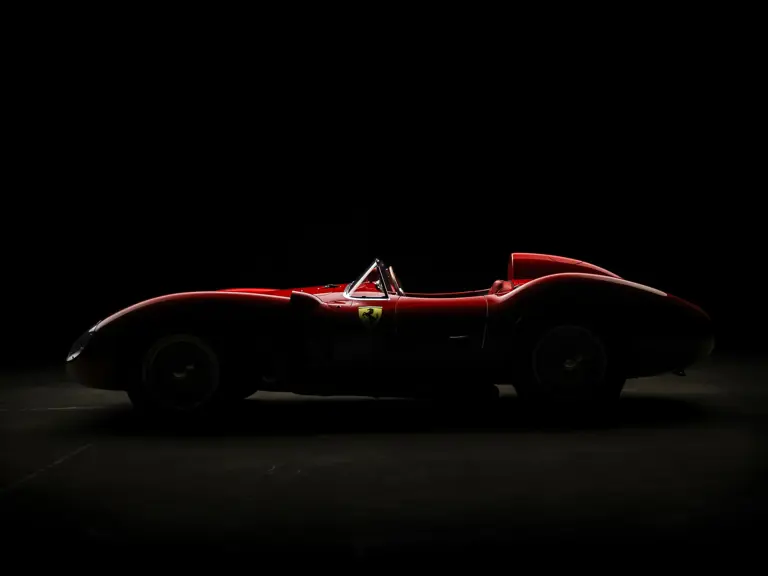
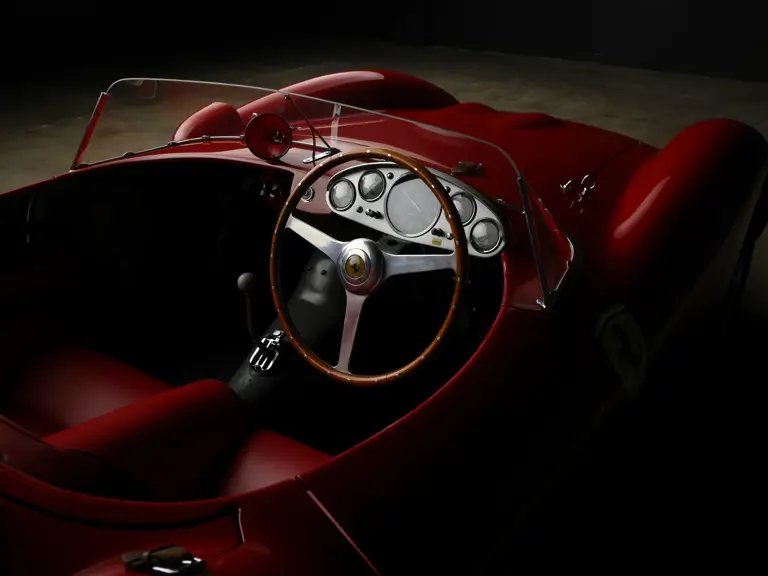
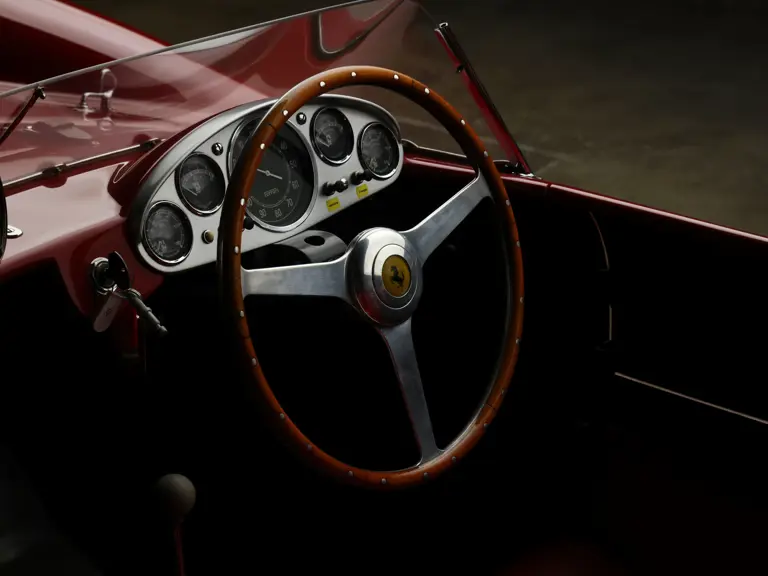
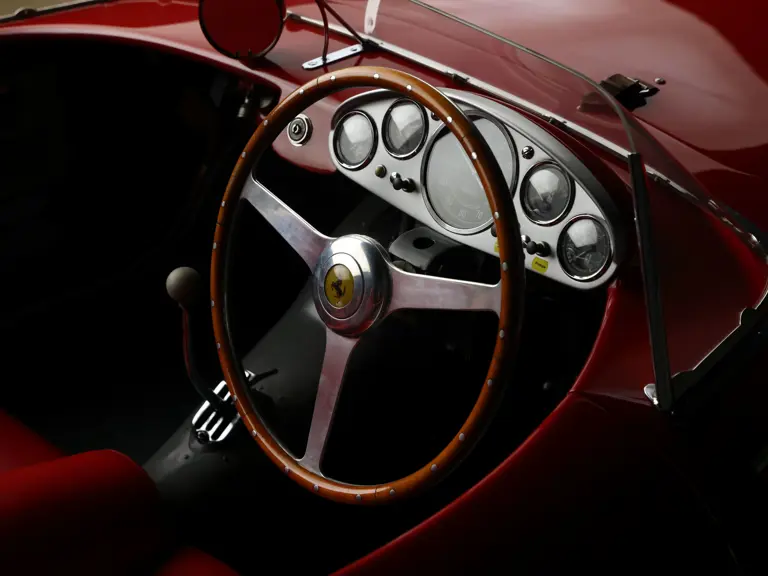
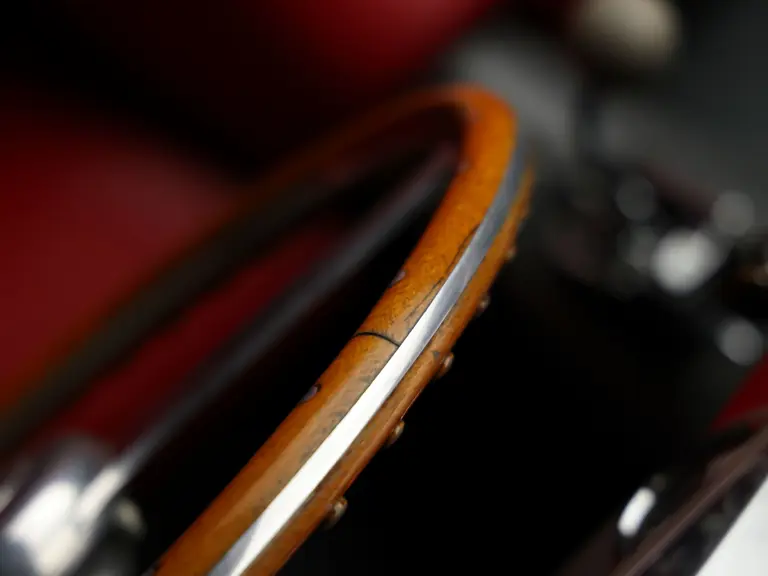
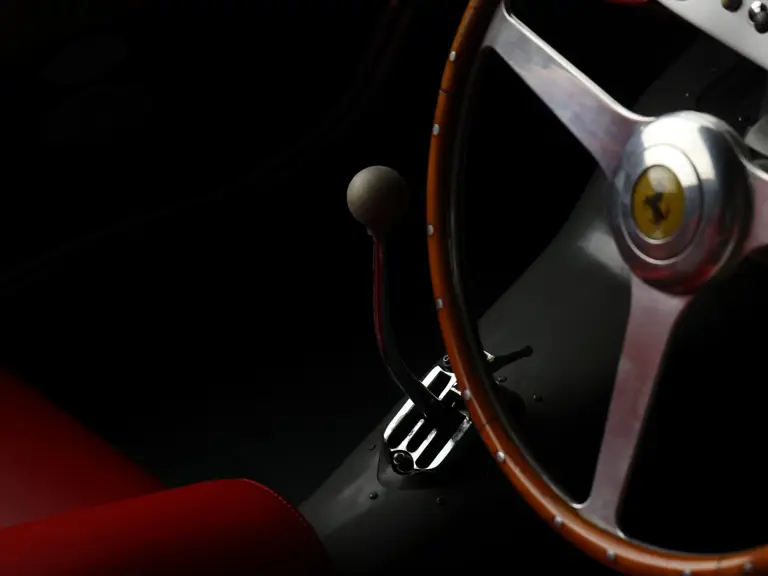
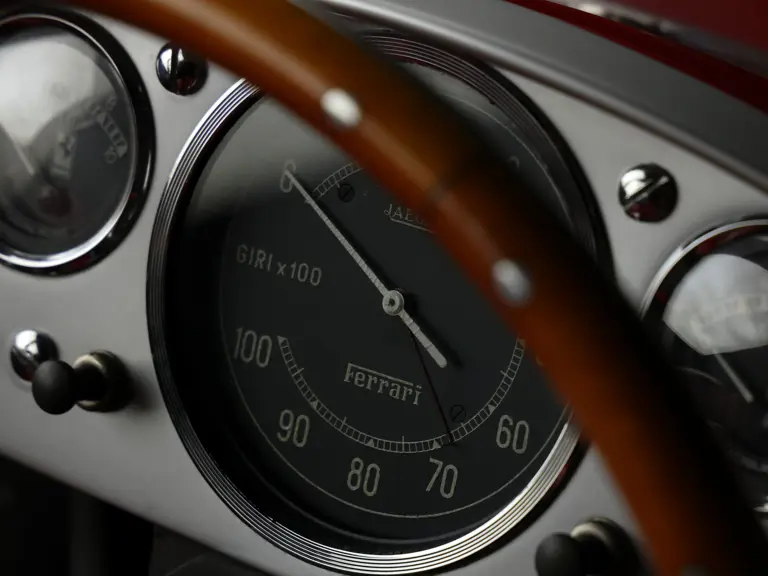
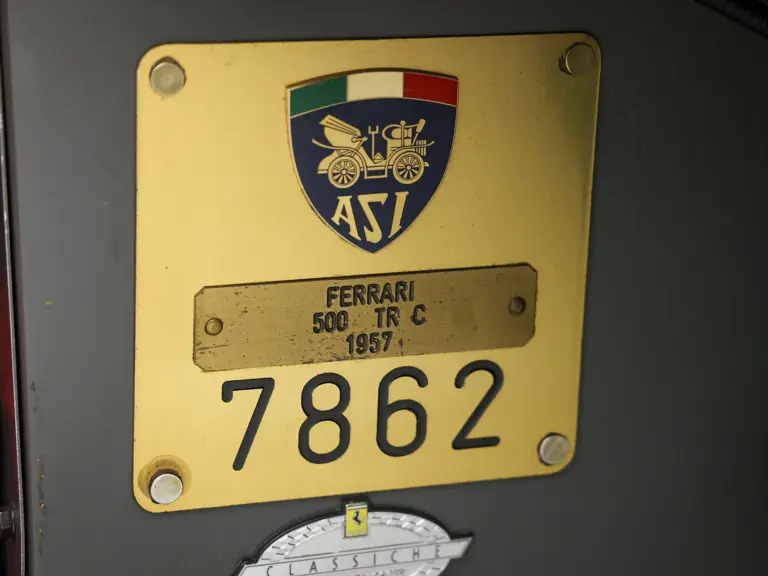
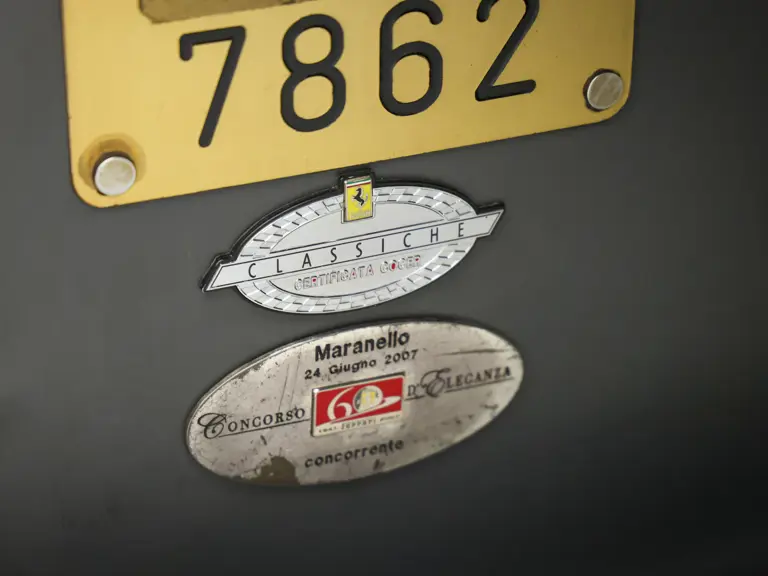
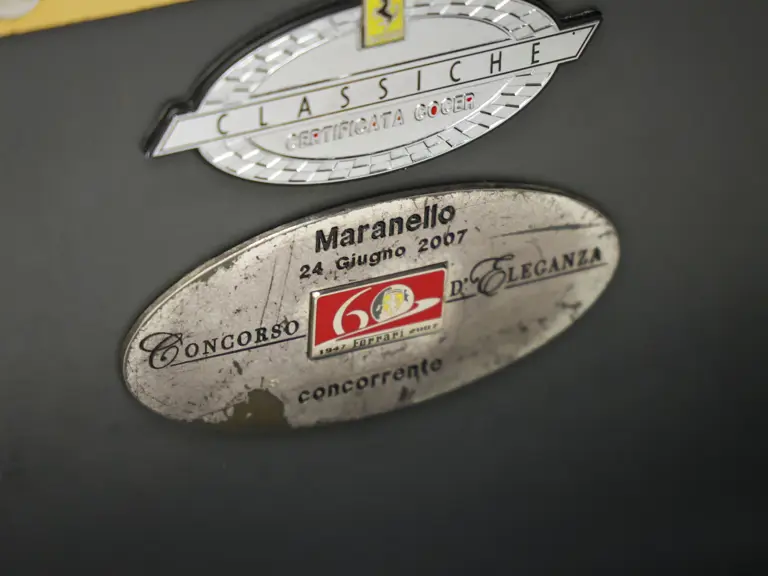
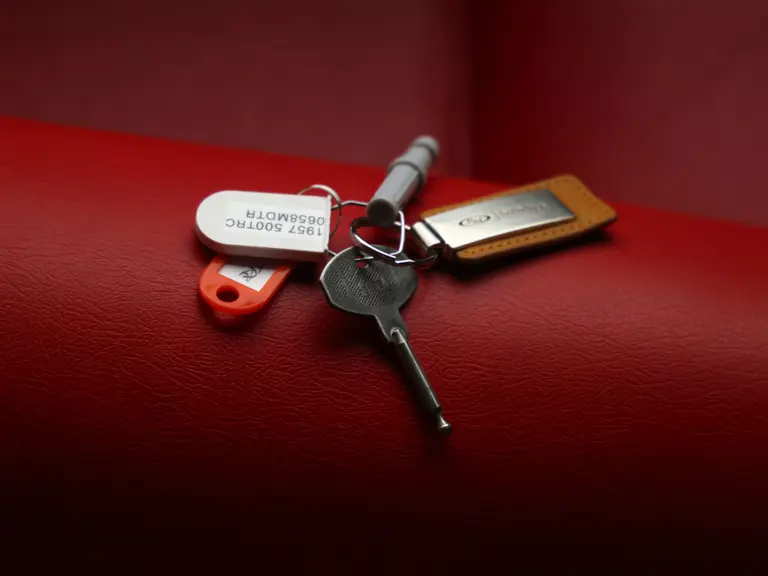
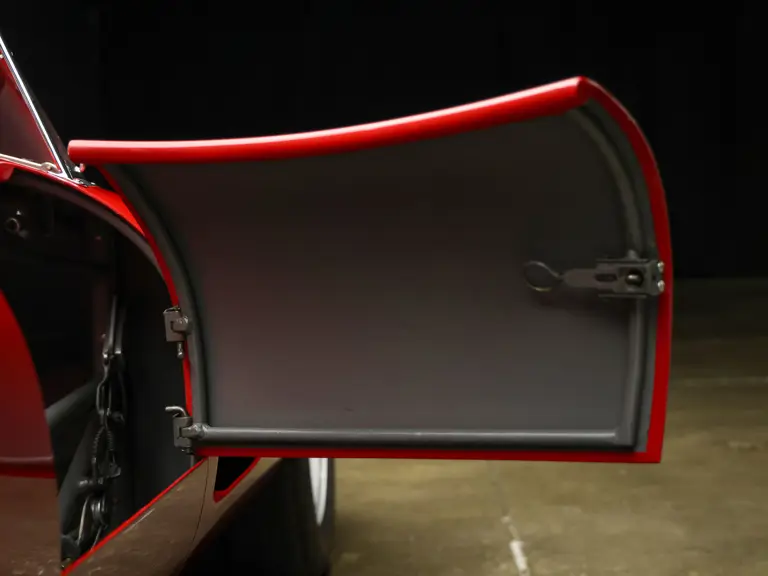
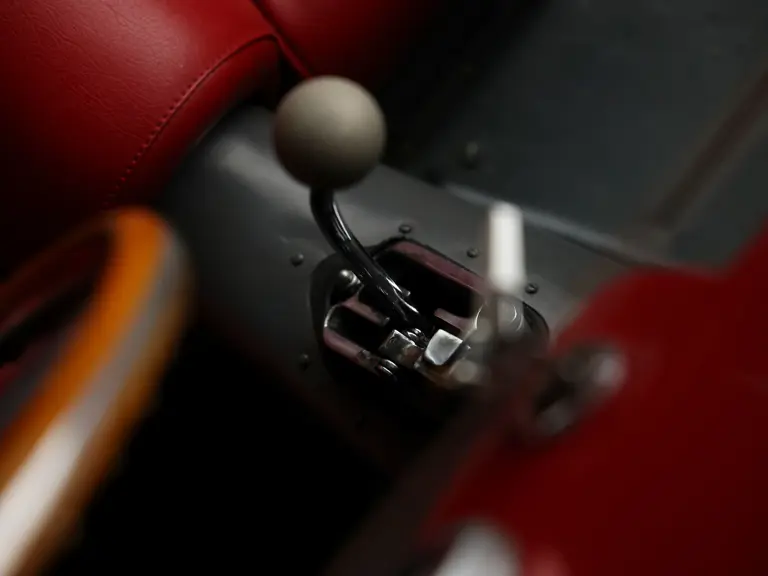
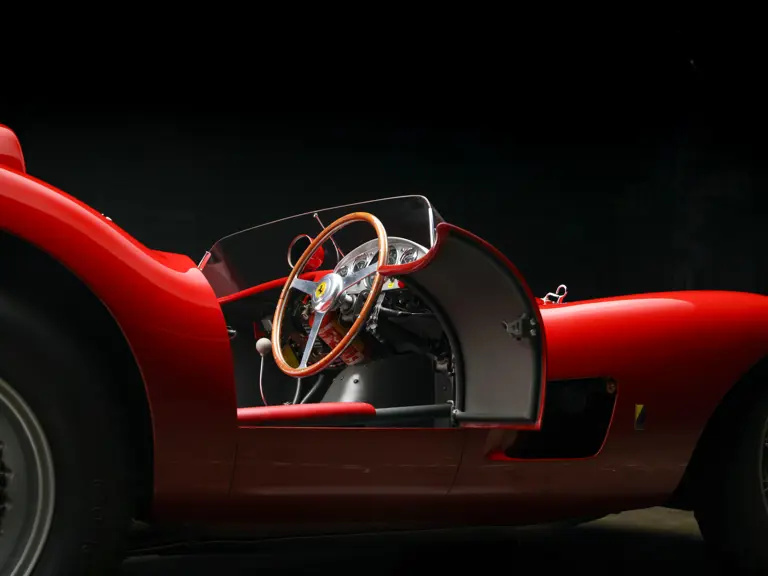
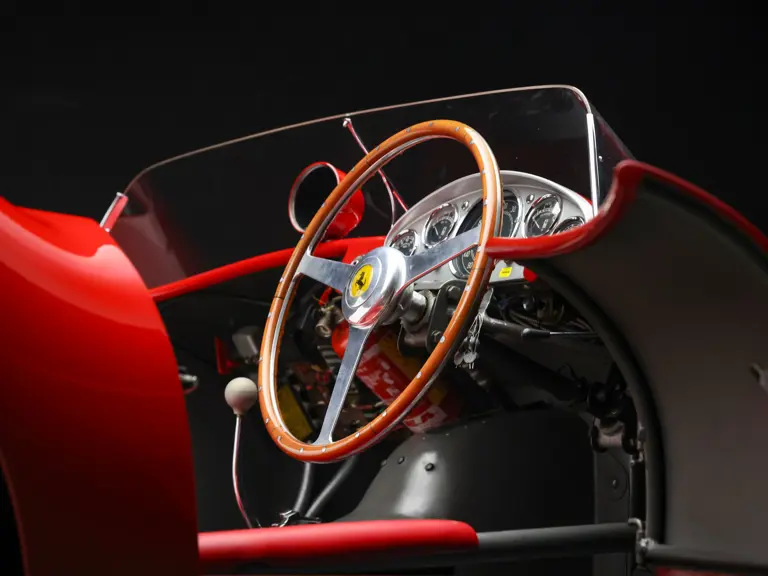

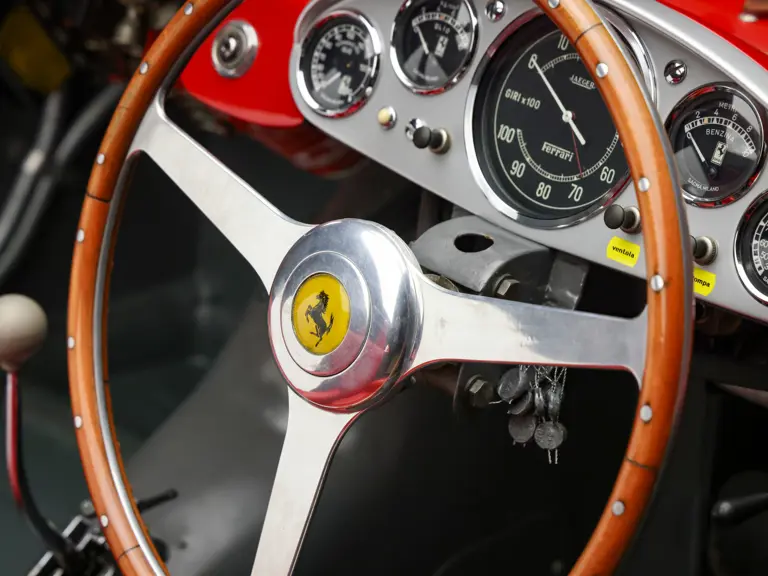
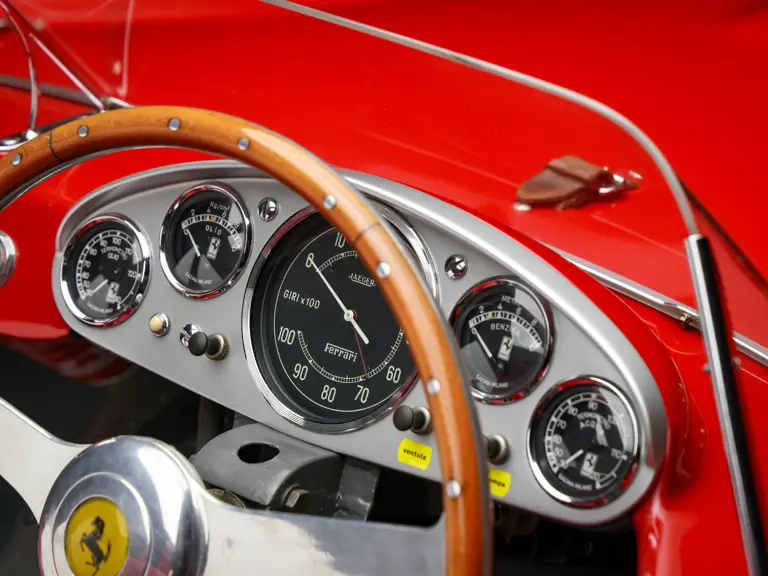
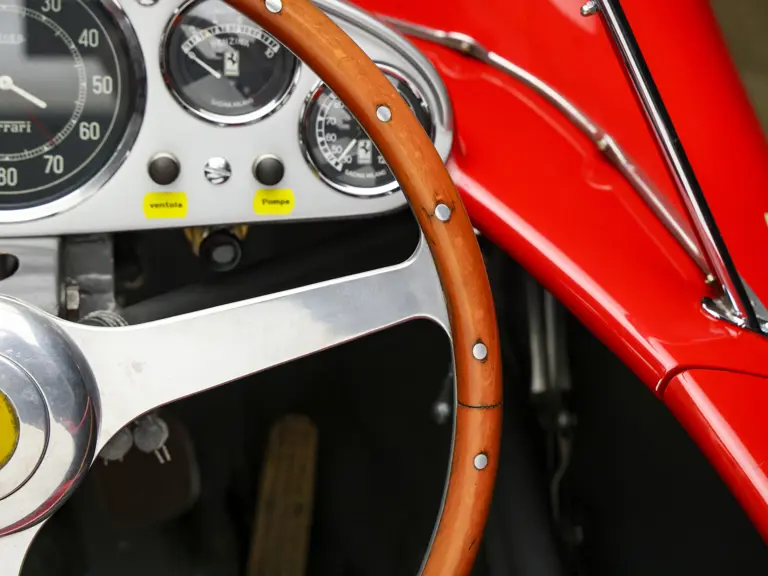
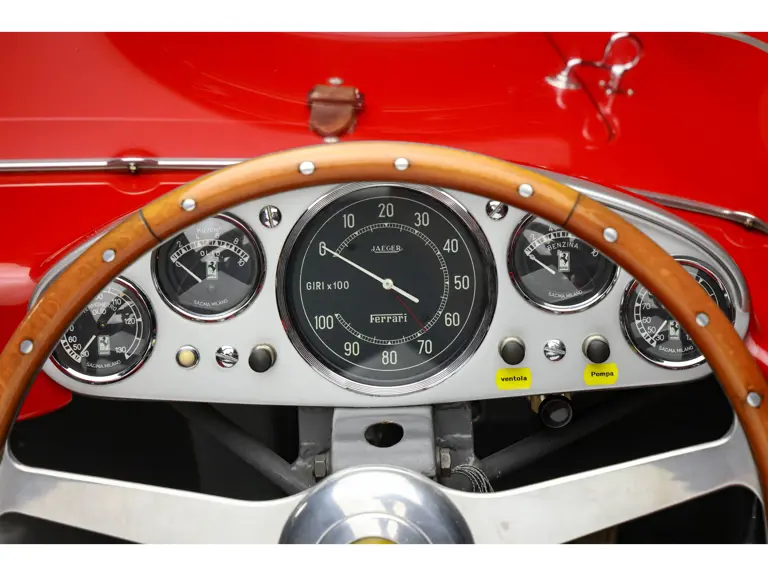
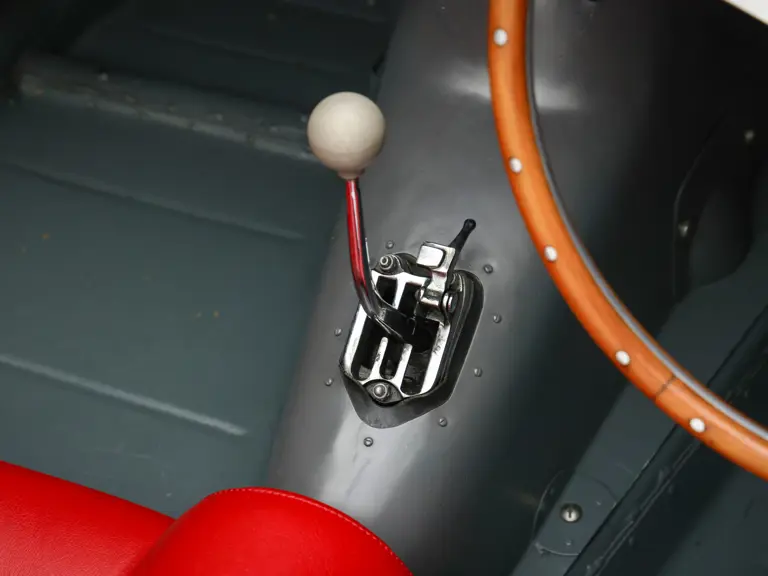
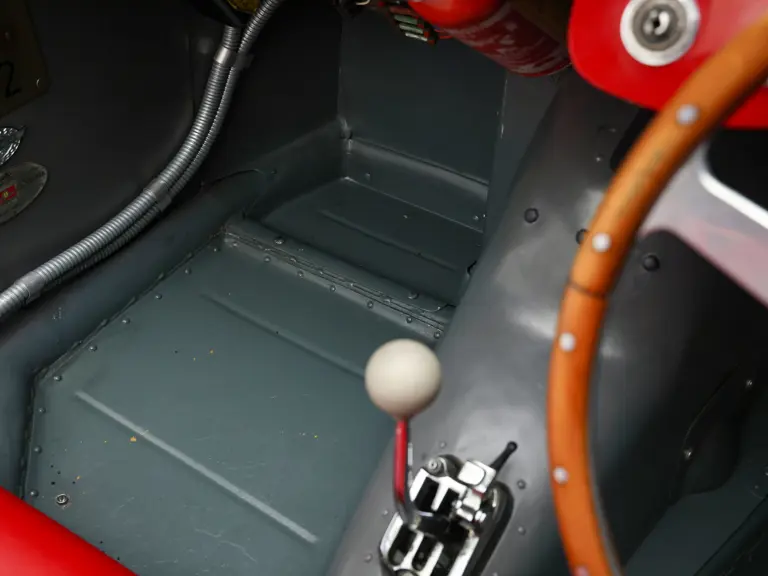
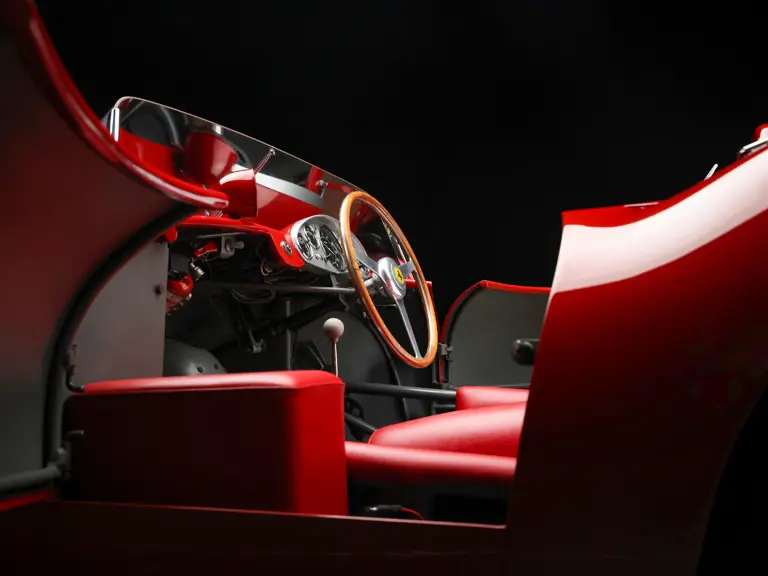
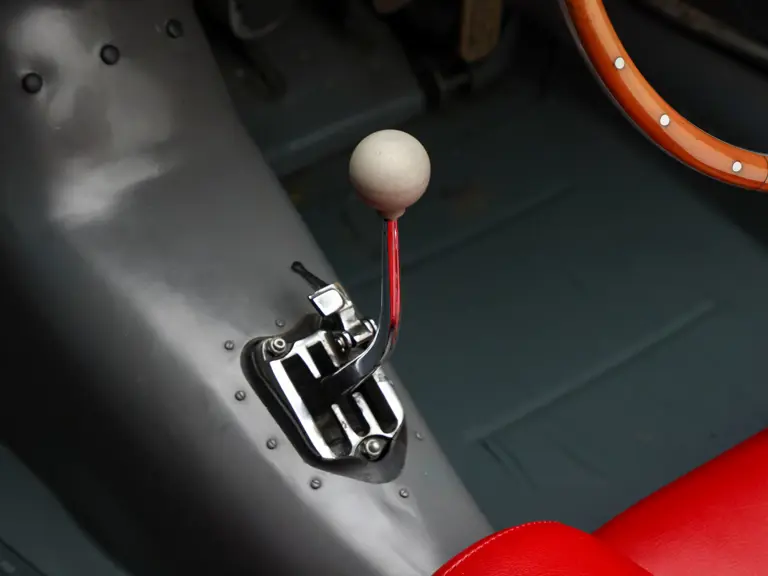
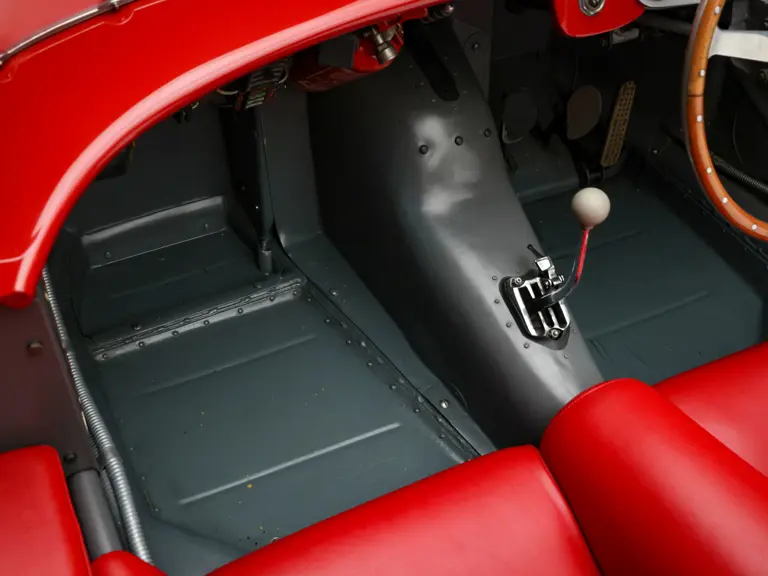
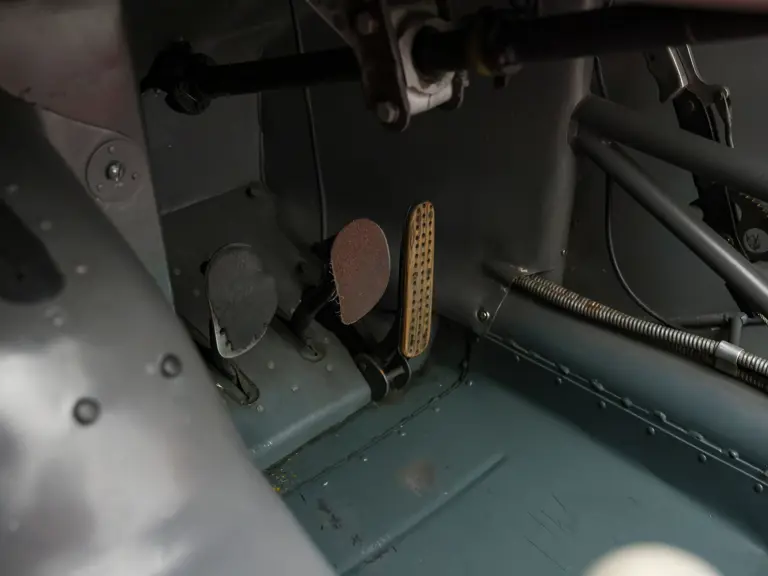

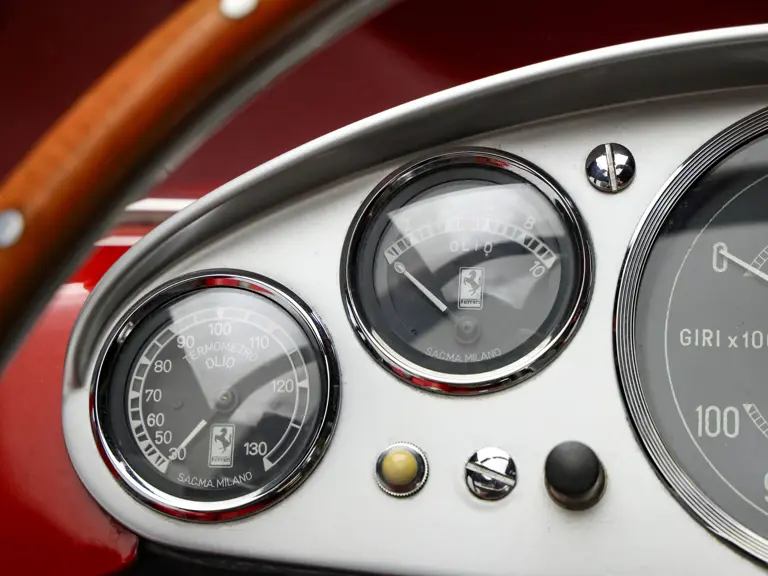
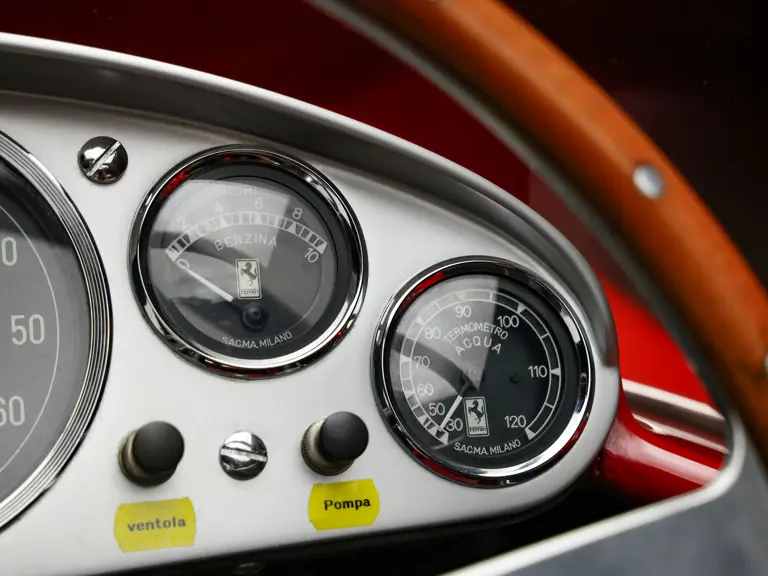
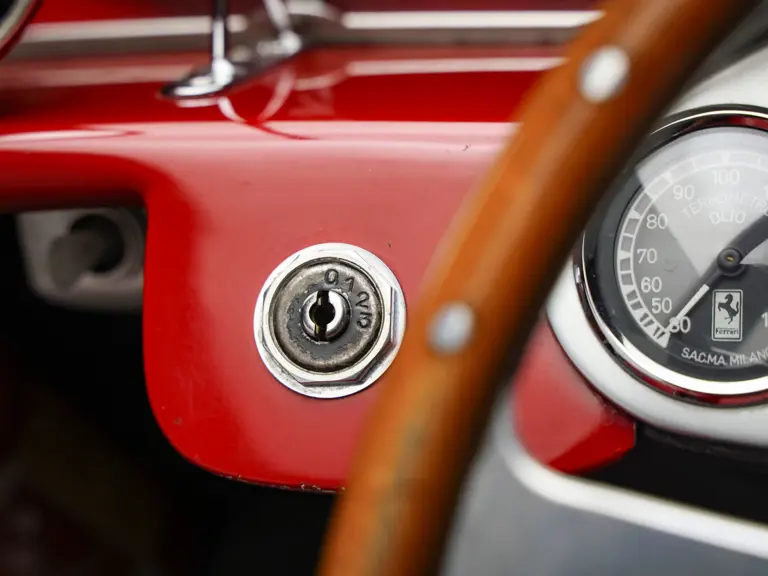
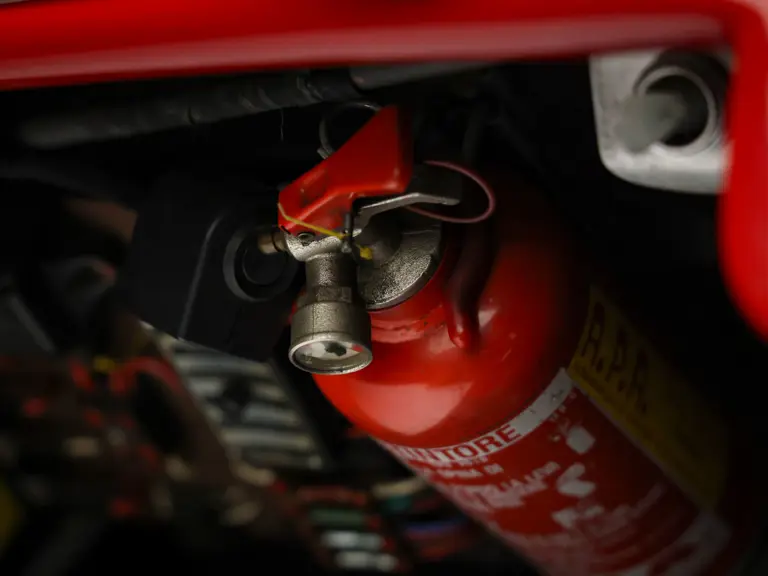
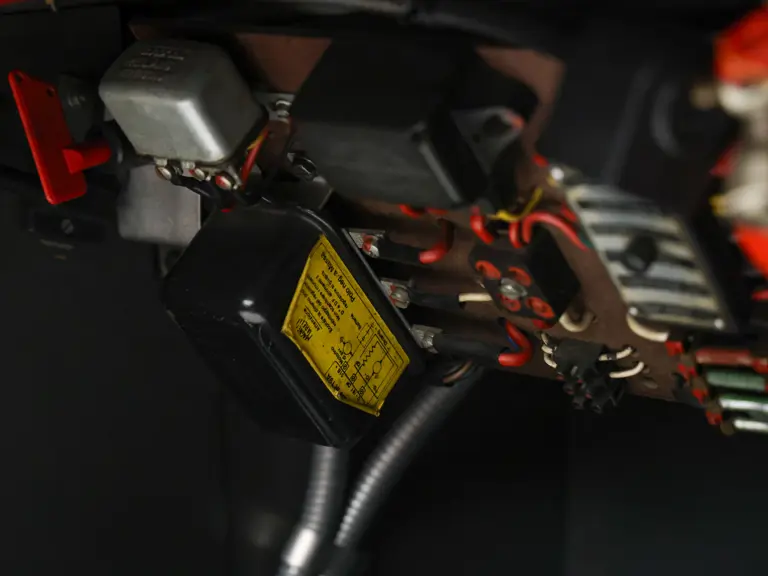
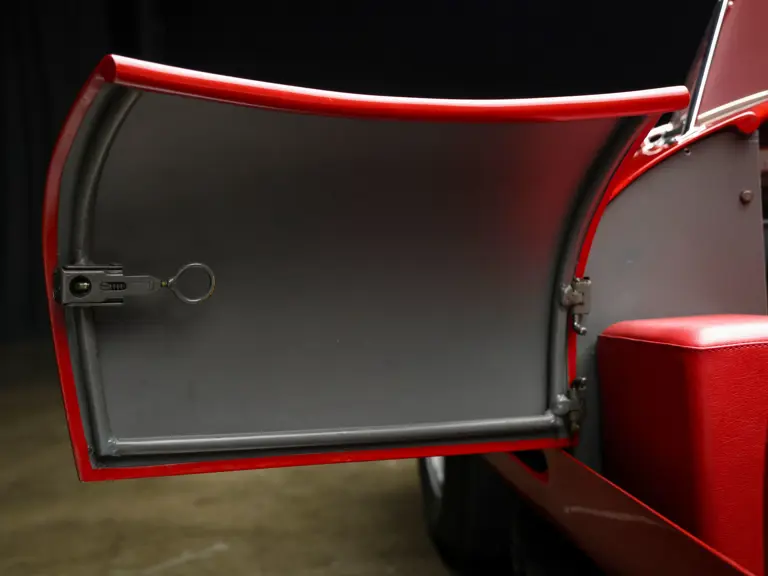
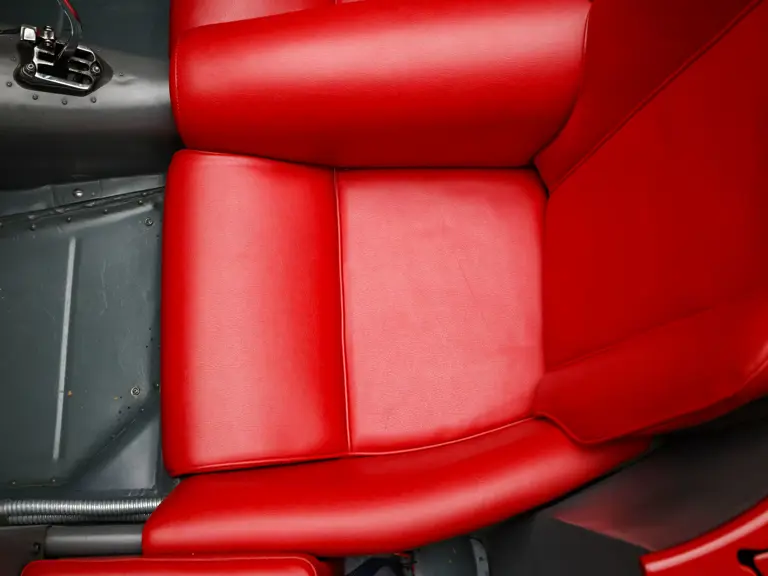
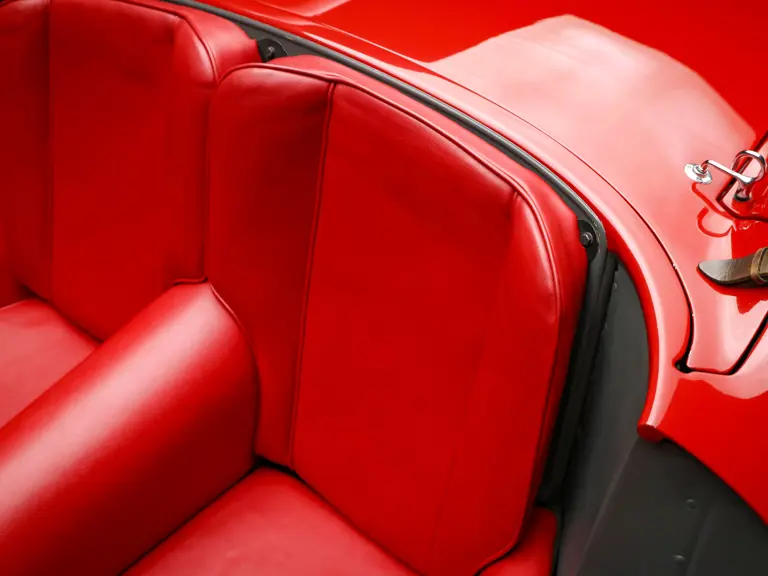
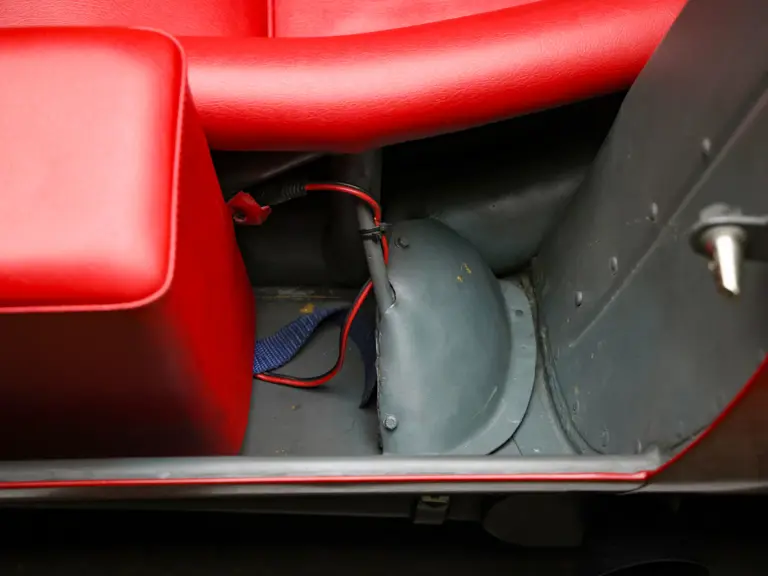
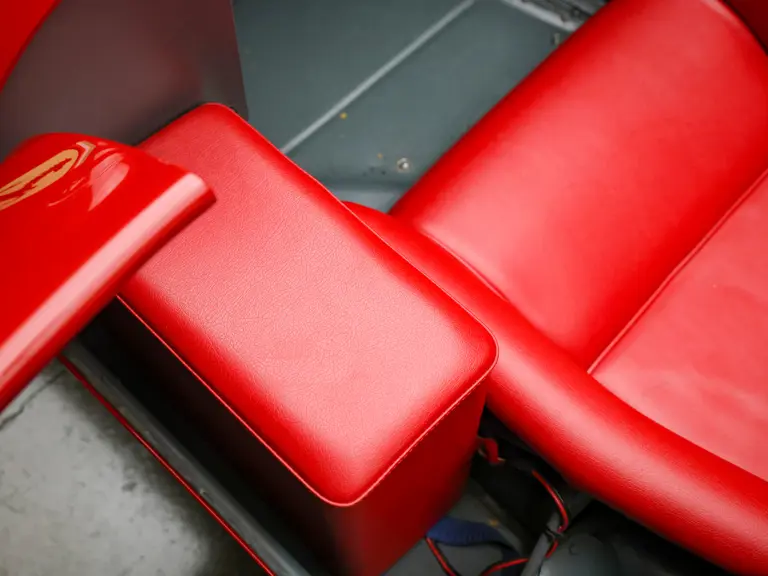
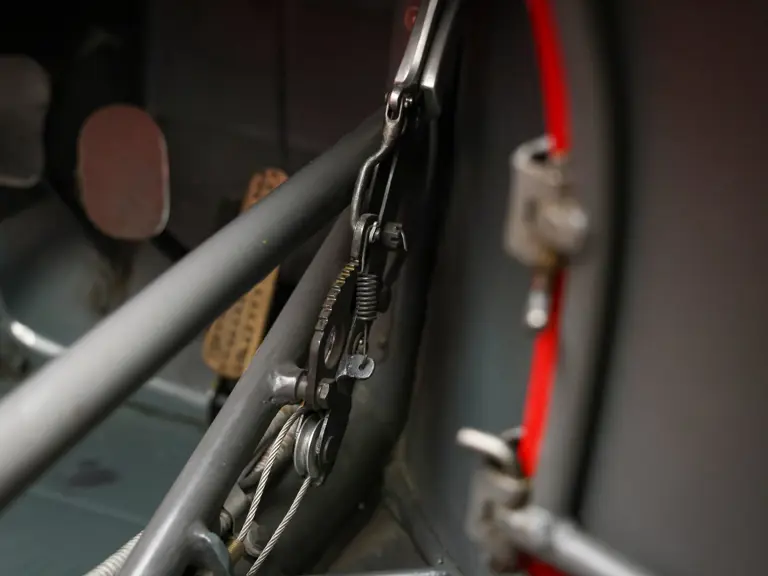

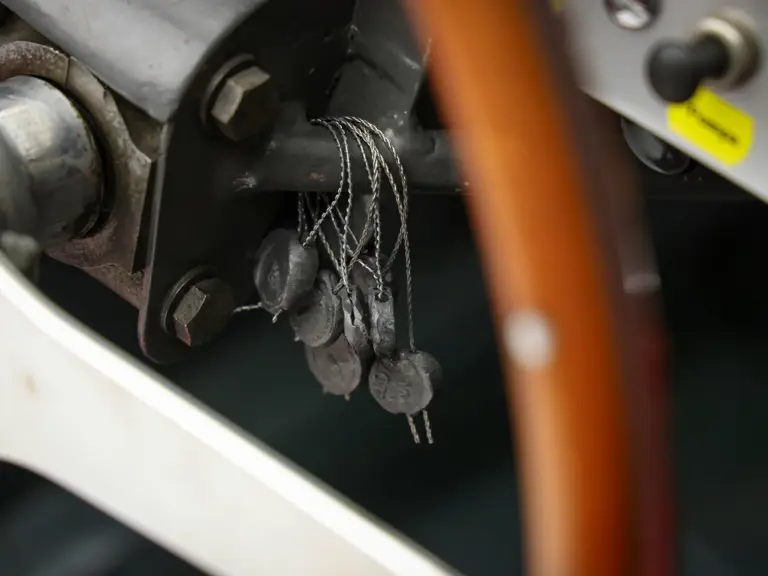
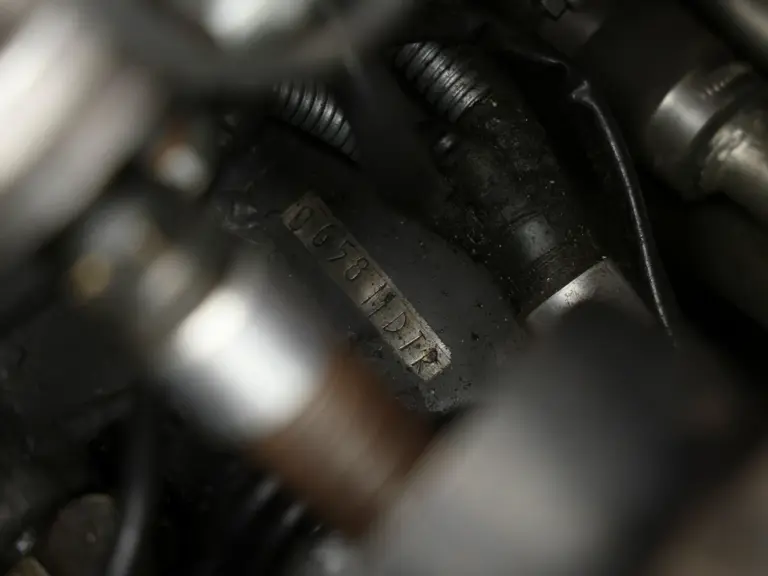
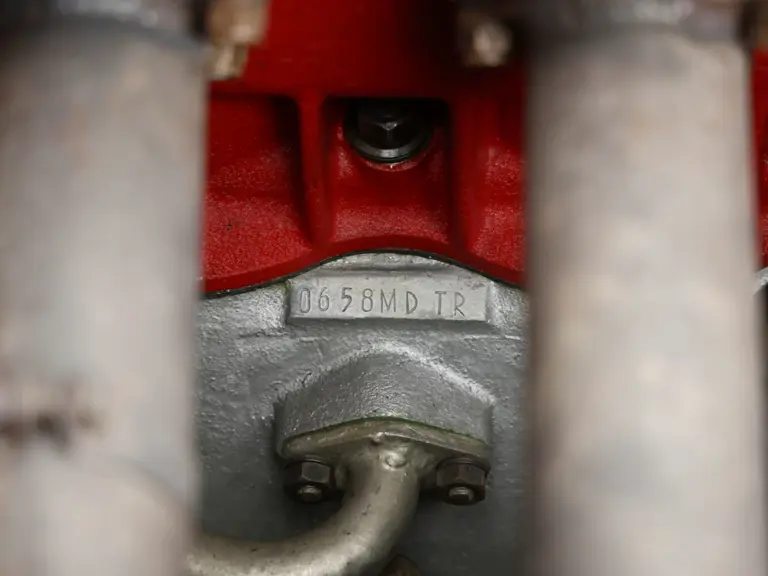
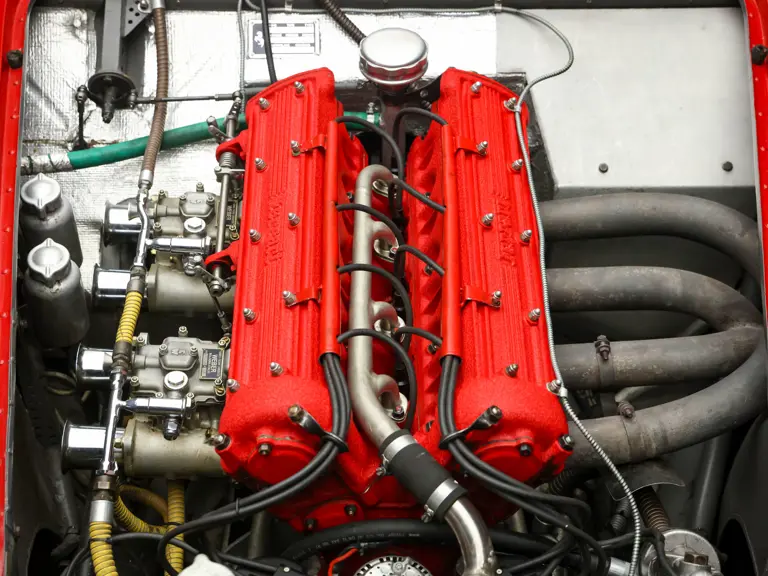
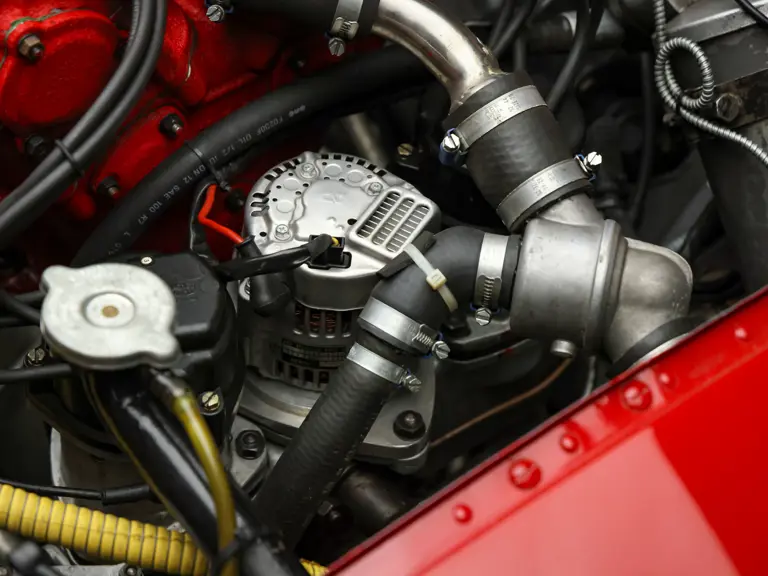
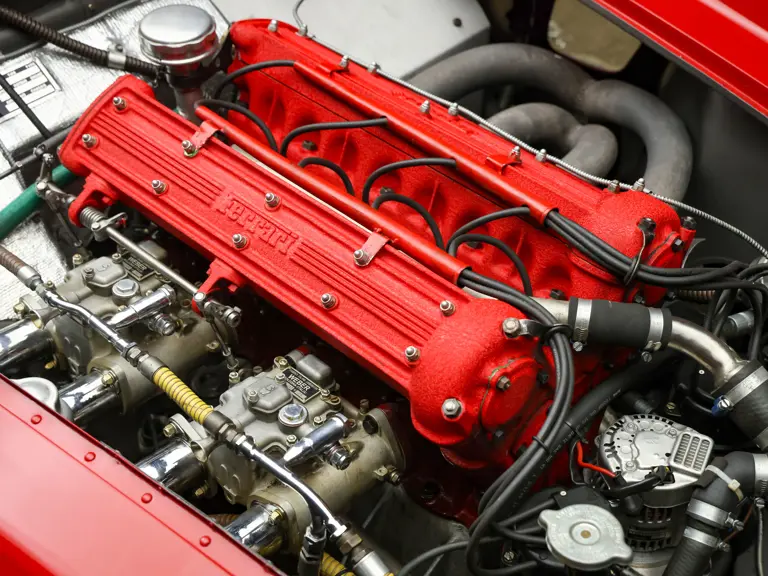
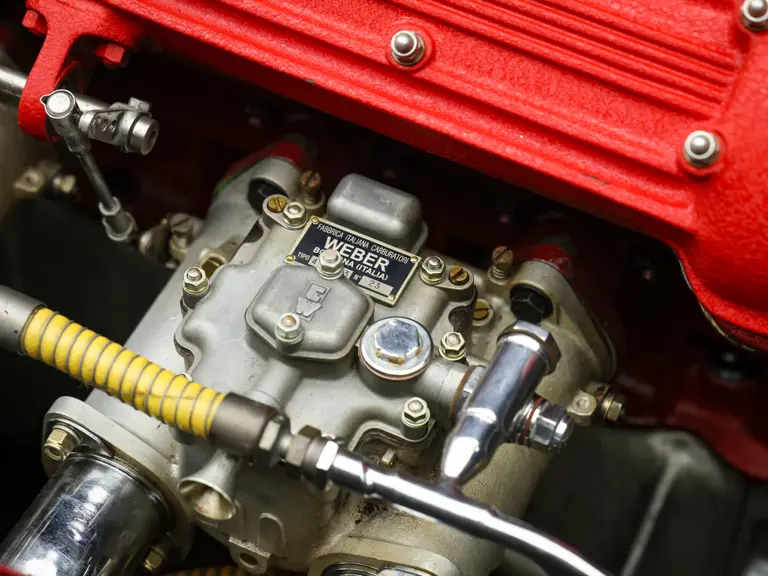
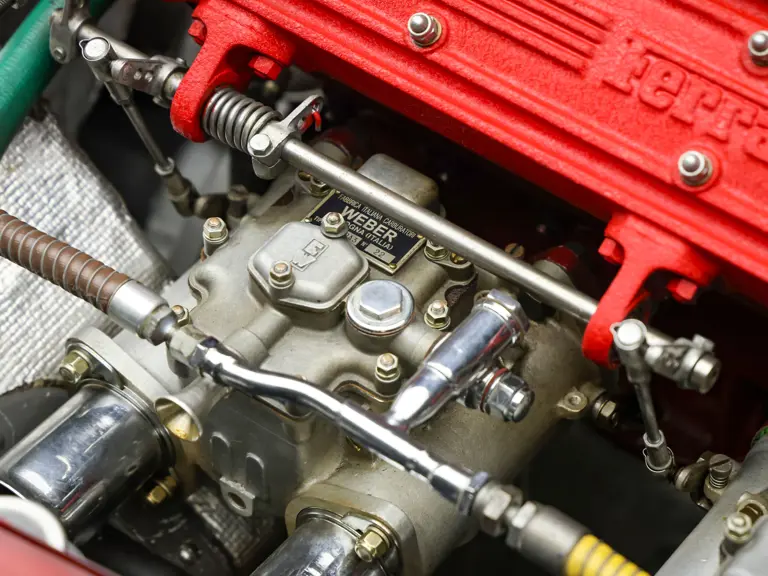
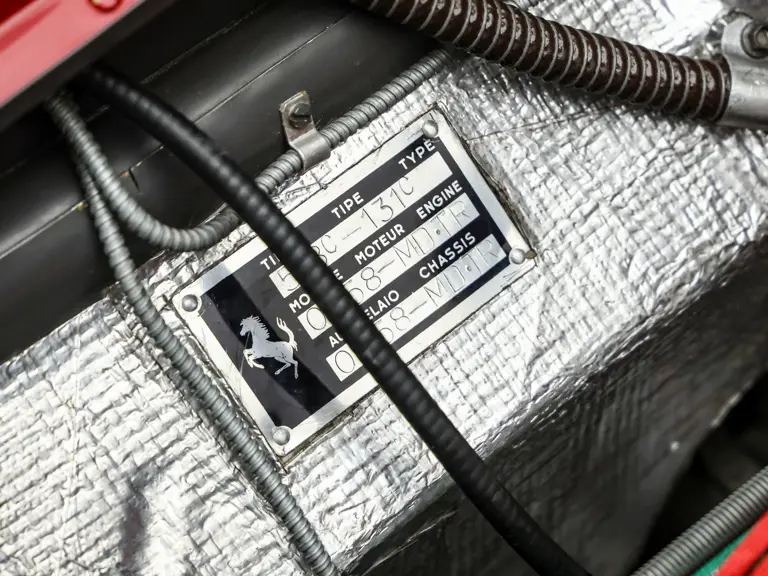
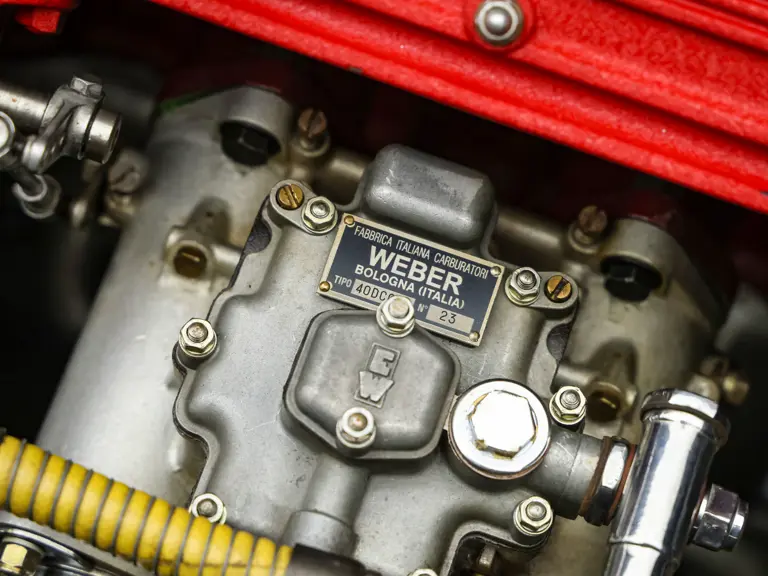
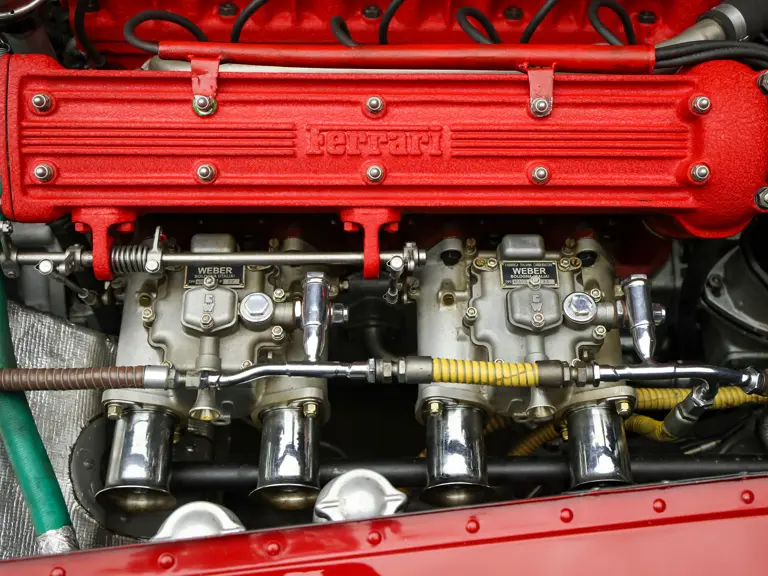
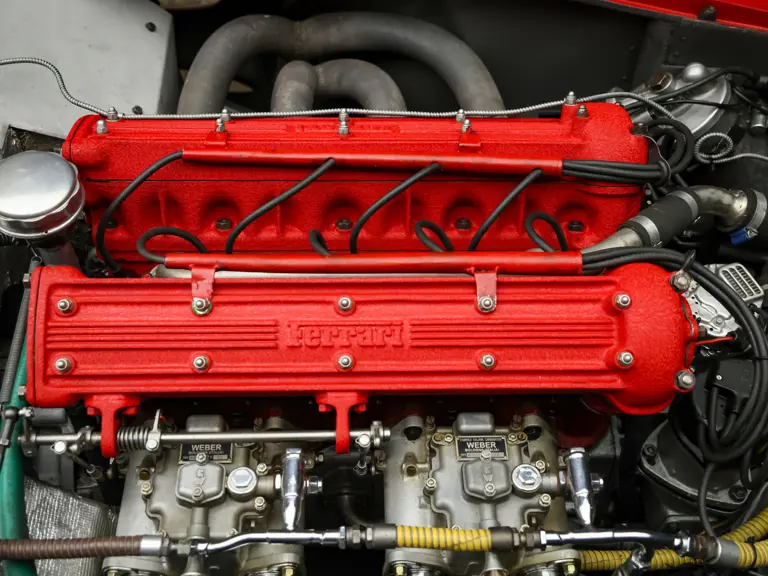
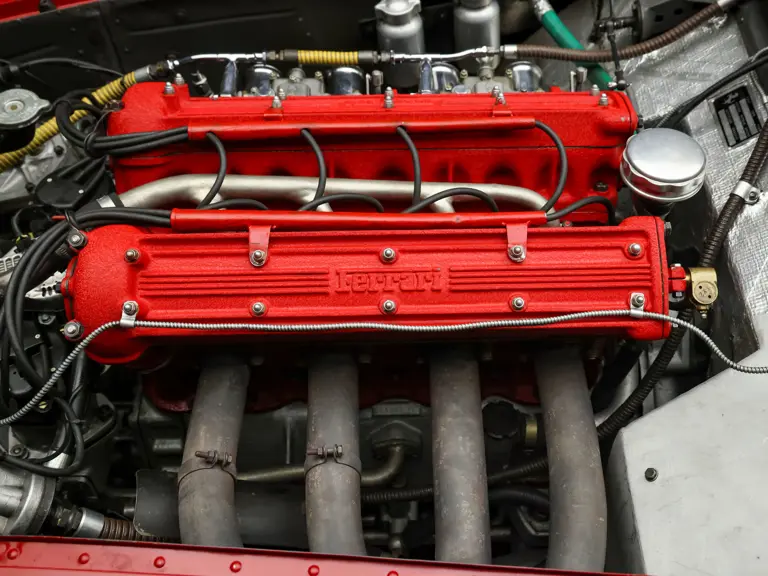
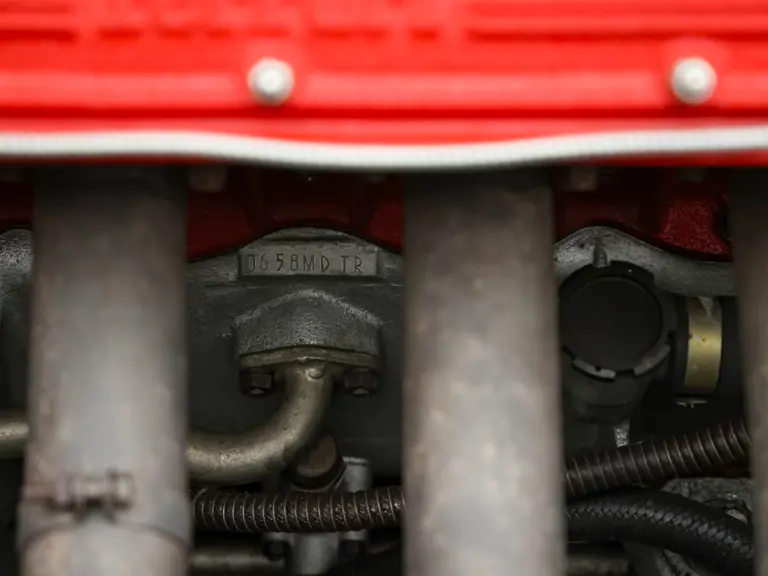
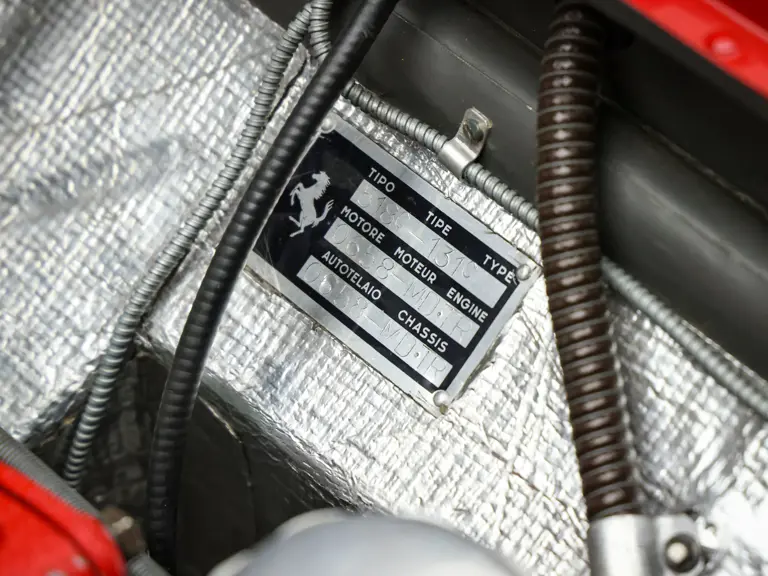
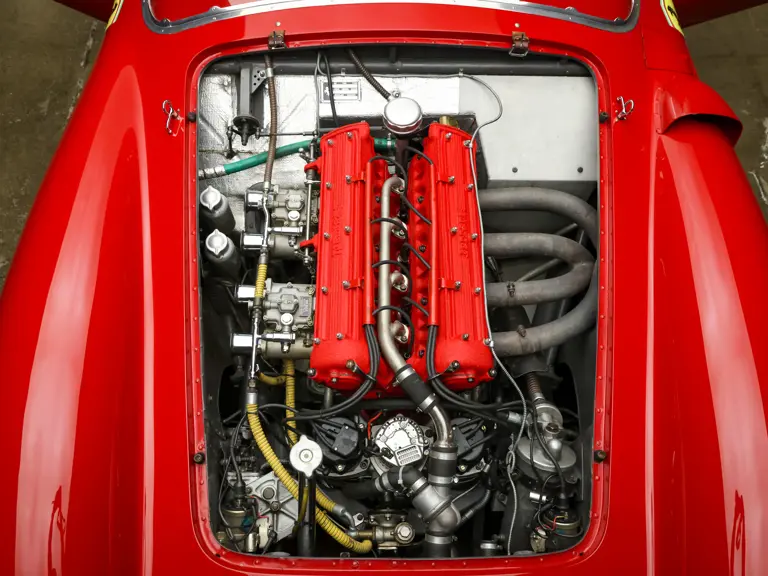

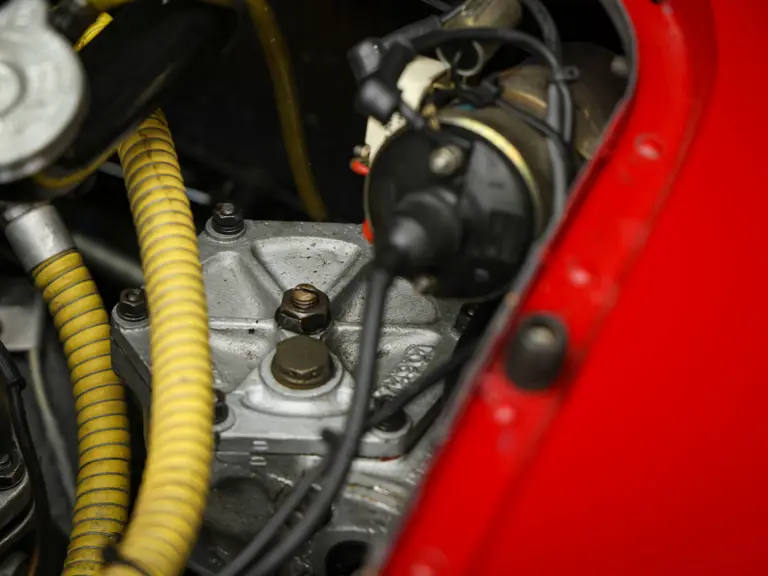
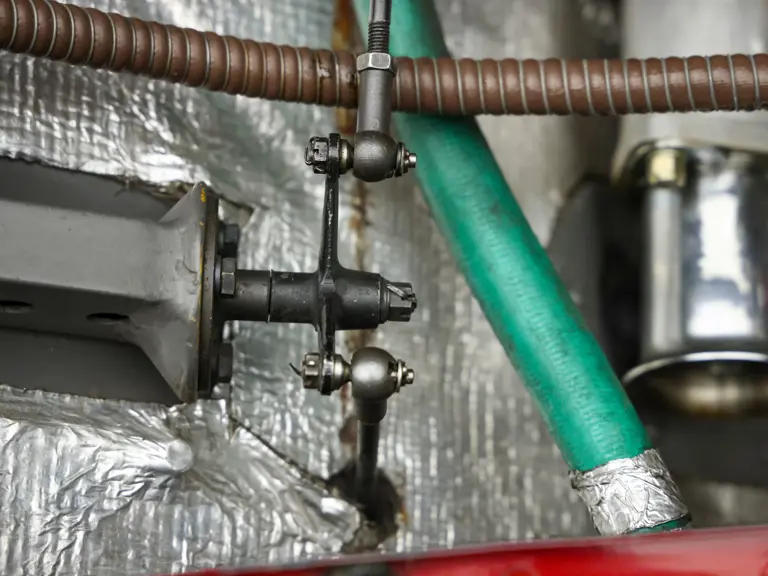
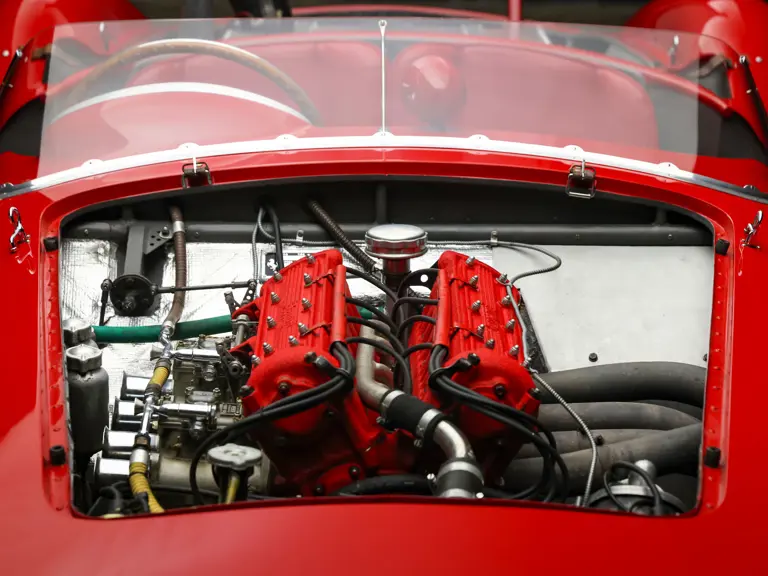
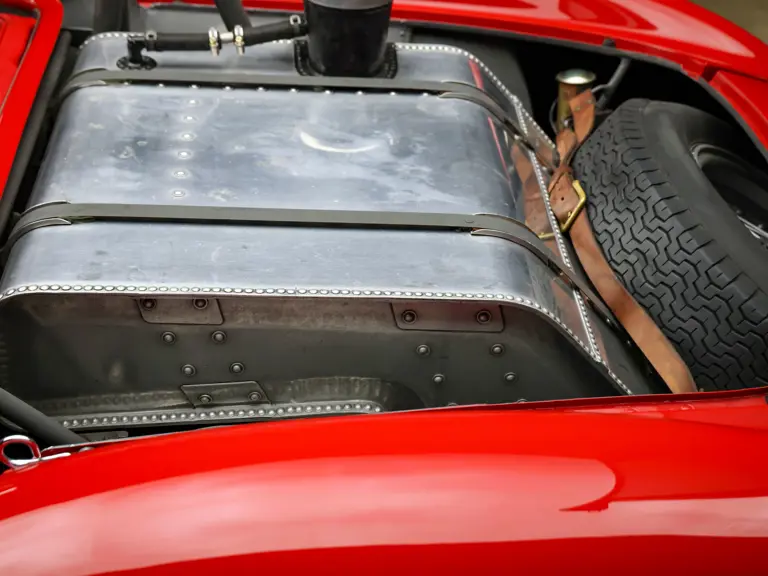
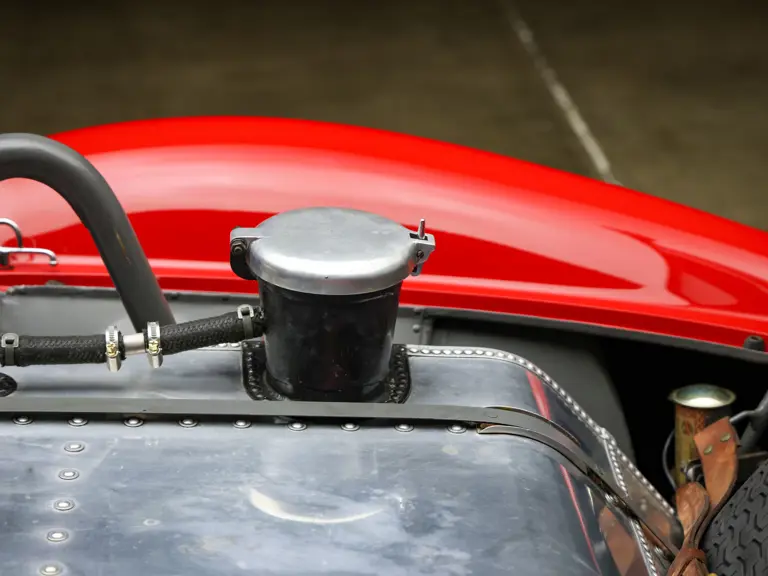
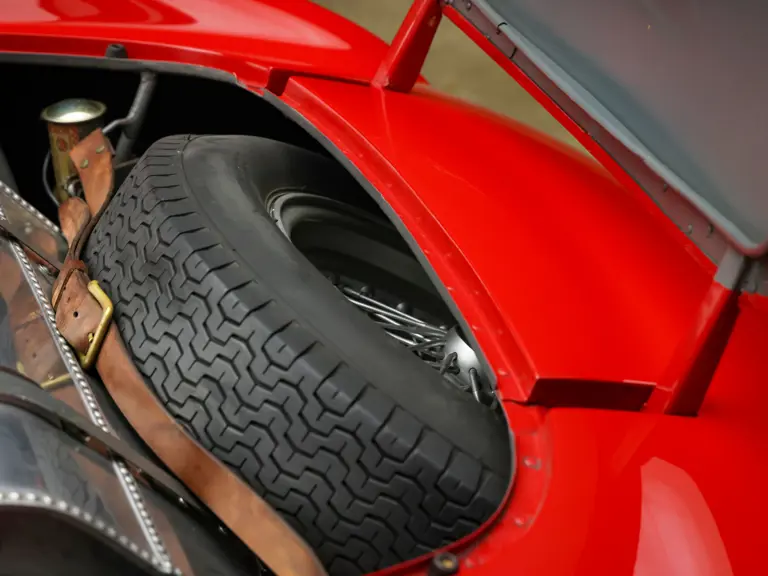
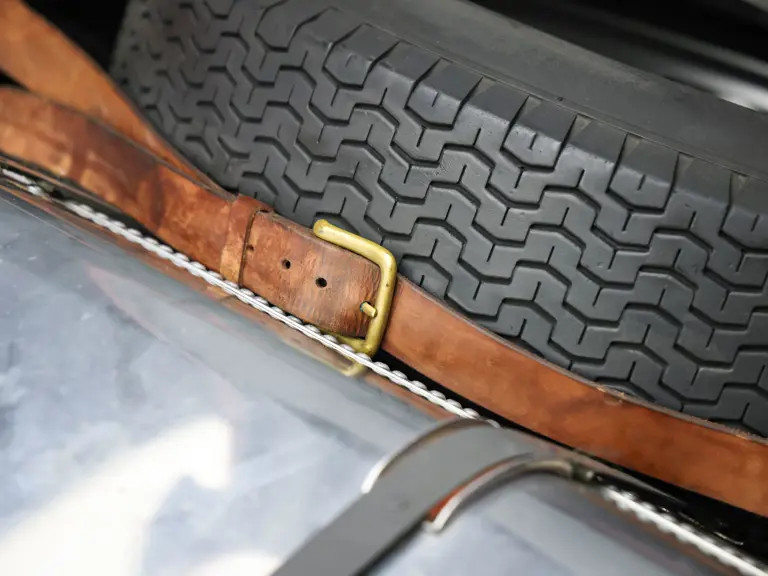

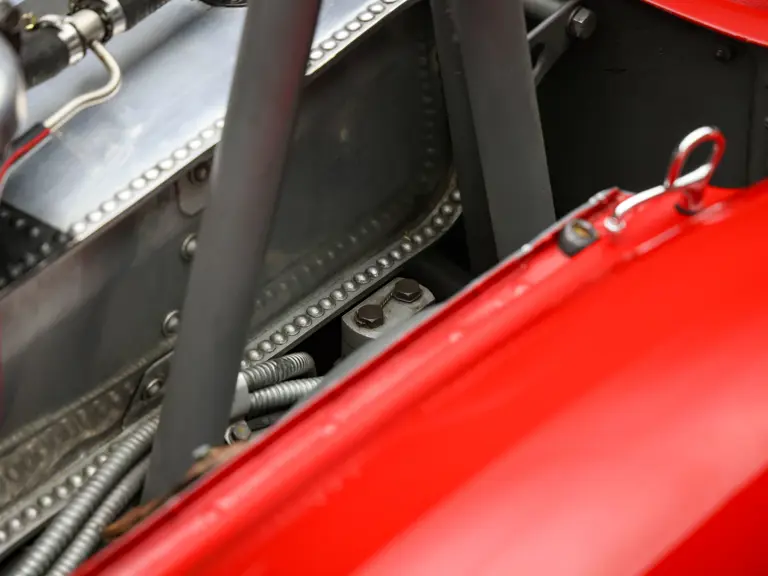
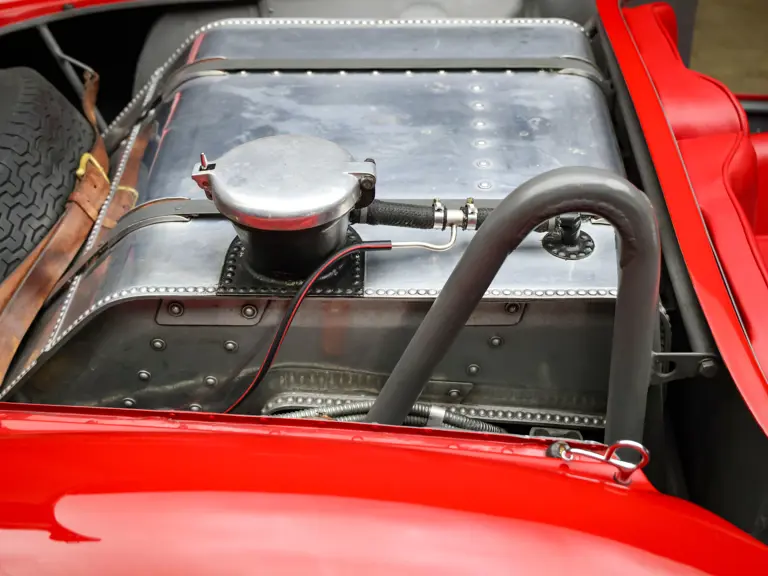
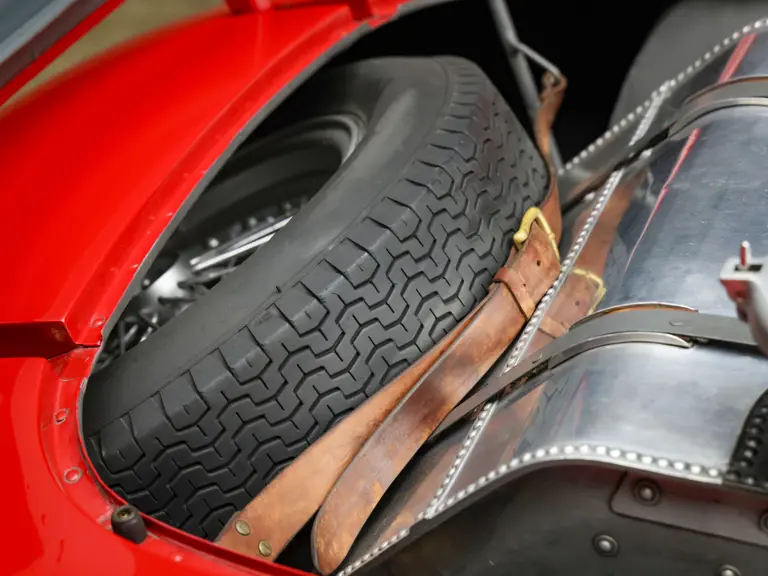
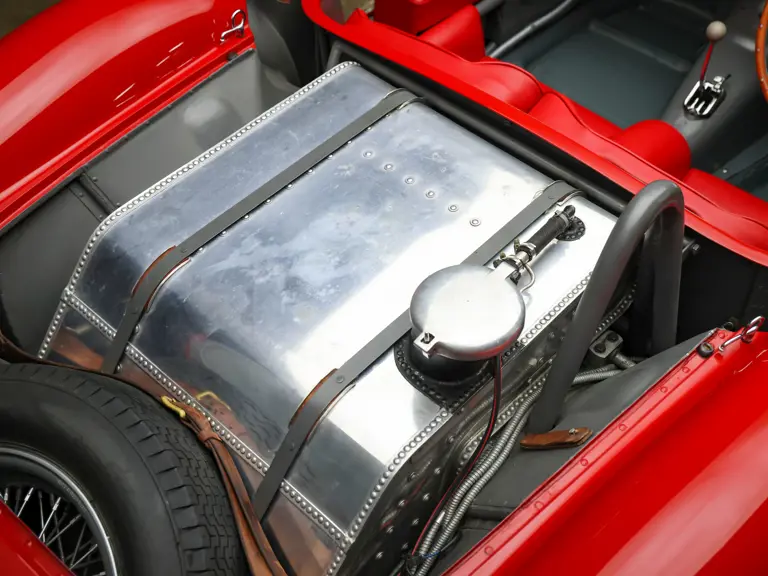
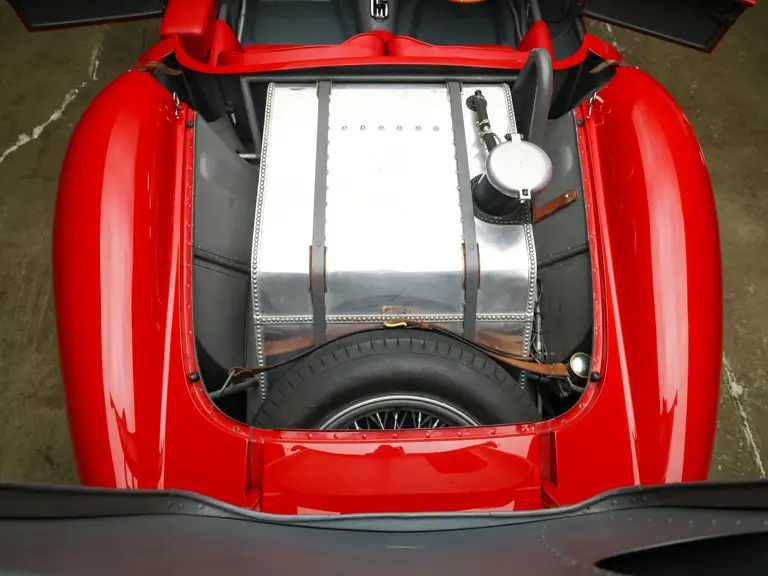
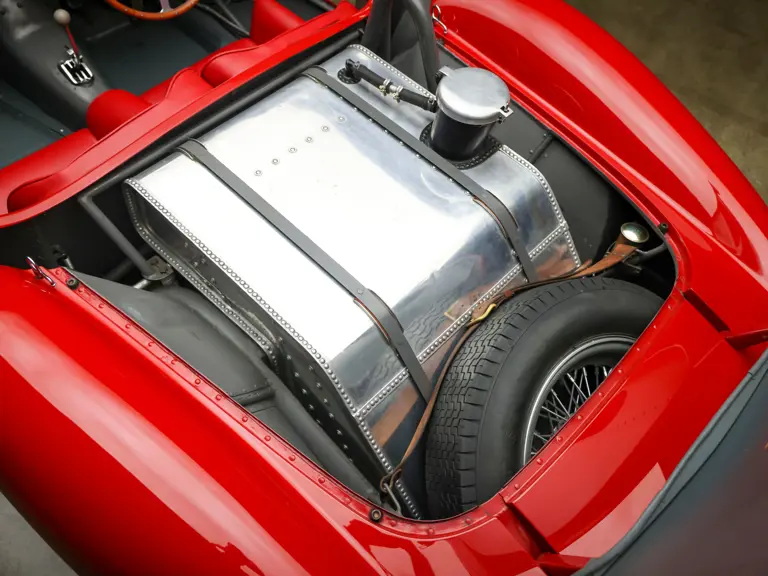
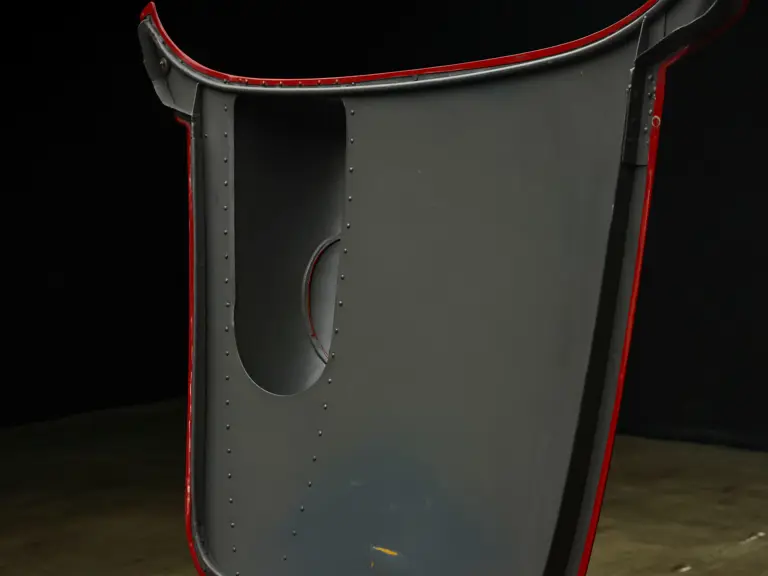
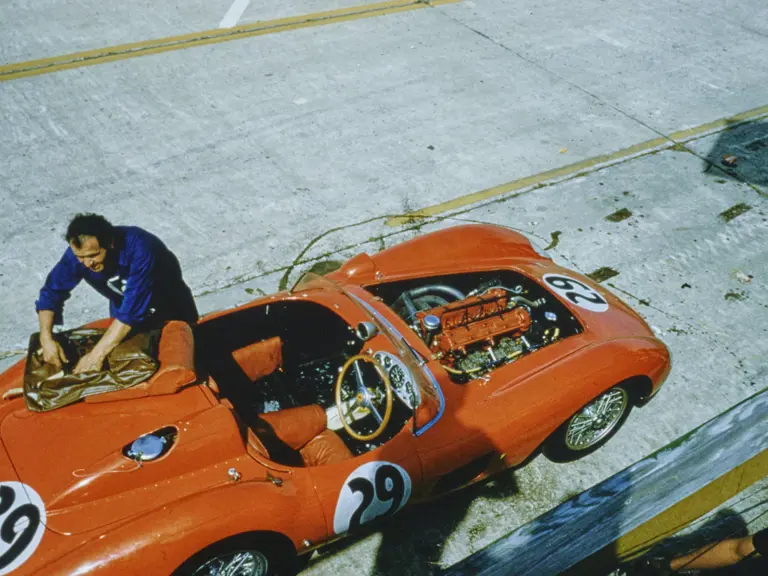
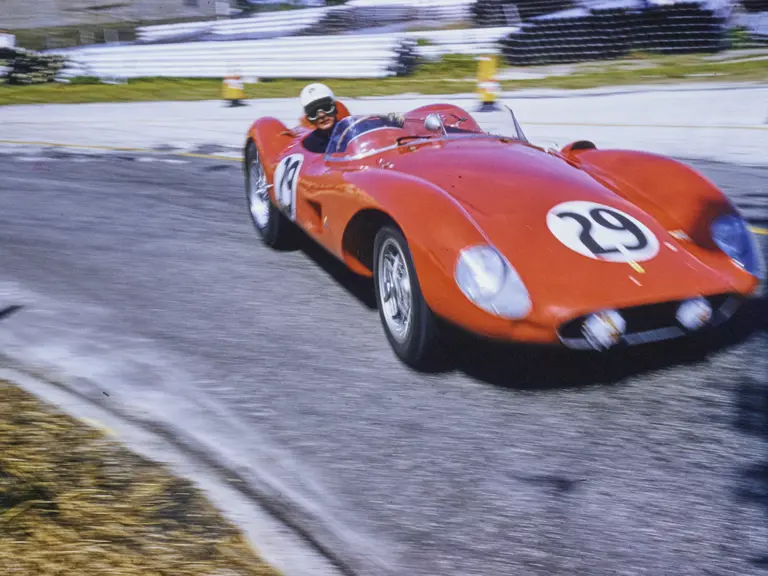
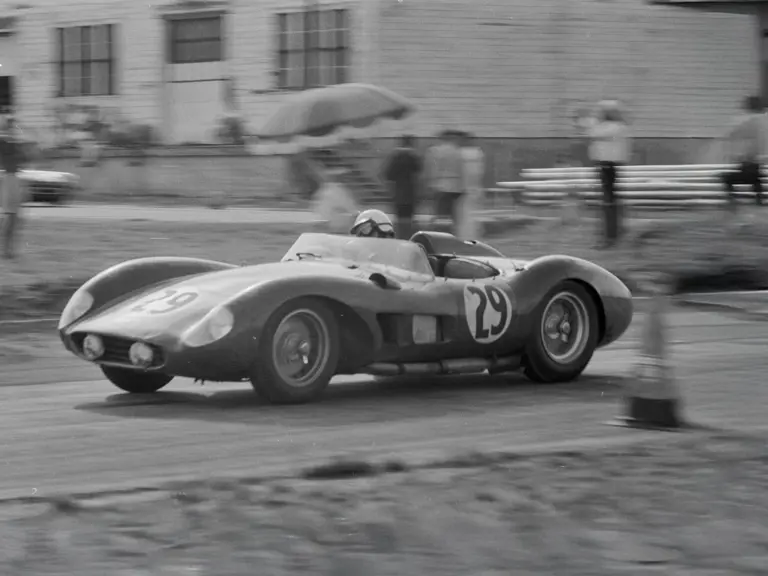
 | Culver City, California
| Culver City, California
